NASA's Perseverance rover gets stunning view of big Mars crater from slippery slope (video, photos)

© NASA/JPL-Caltech/ASU/MSSS

© NASA/JPL-Caltech/ASU/MSSS

© CCTV+

© Getty Images

© NASA
Author(s): Rachel Berkowitz
A new model of liquid sprays reveals the mechanisms behind droplet formation—providing important information for eventually controlling the droplet sizes in, for example, home cleaning sprays.
[Physics 17, 158] Published Tue Oct 29, 2024

© NASA

© Daein Ballard, CC BY-SA
Author(s): Charles Day
A light beam with orbital angular momentum can produce the rotational analog of the Doppler effect on an ion.
[Physics 17, s133] Published Tue Oct 29, 2024
The town of Williams Bay, Wisconsin is much like any other small city on a lake, with an offering of tourist shops and an active beach. But just a short drive past the activity brings you to Yerkes Observatory. Behind an opening of trees stands a sprawling, grand estate with a well-manicured lawn and aContinue reading "How Yerkes Observatory started over"
The post How Yerkes Observatory started over appeared first on Astronomy Magazine.


© NOAA

© VCG/VCG via Getty Images

© ESA/Hubble & NASA, M. Sun

© Capital One
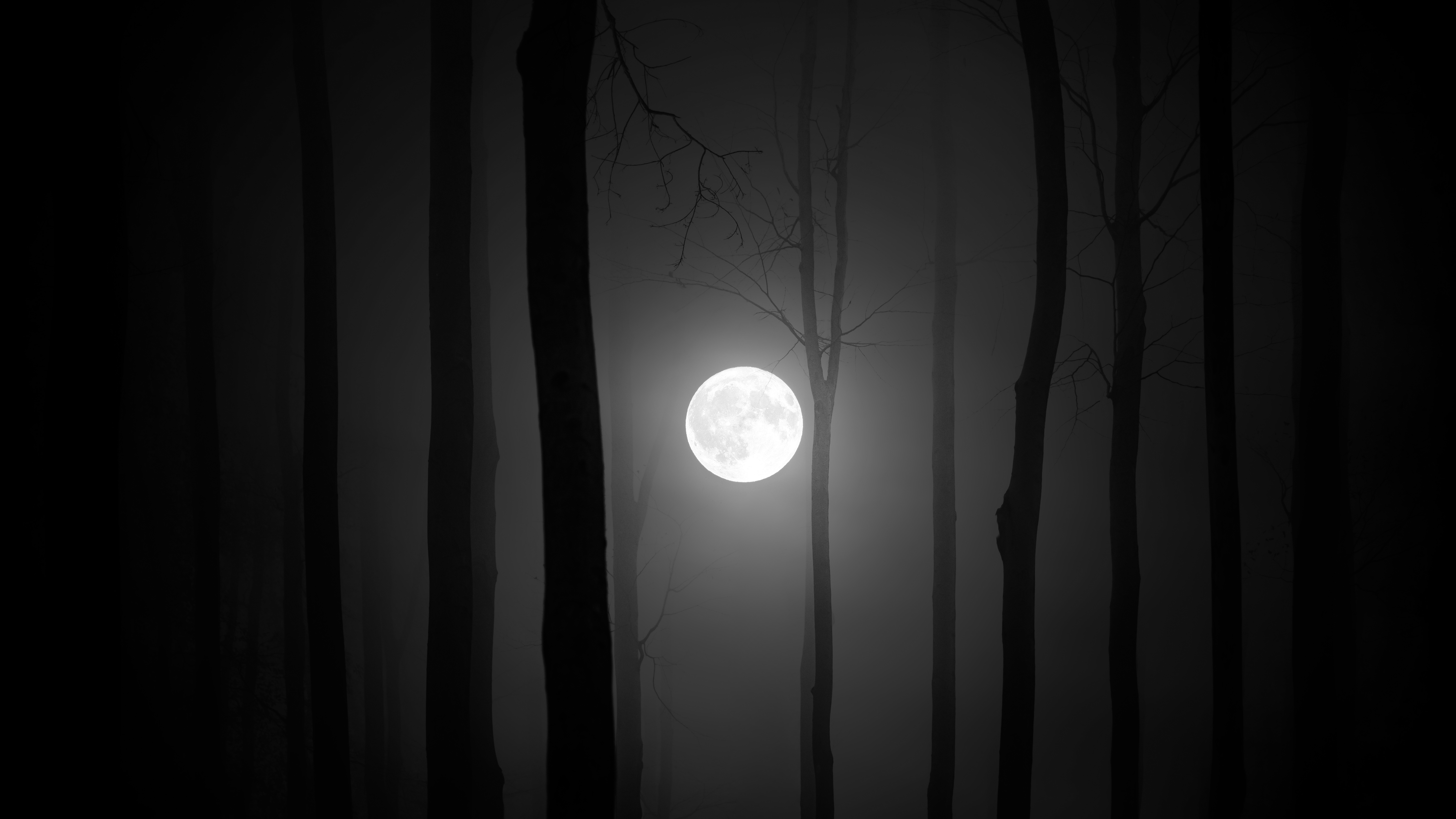
© Getty Images/Milamai
Astronomers have discovered a lightweight black hole that’s a bit of a cosmic conundrum. Hypothetically, black hole masses can range all the way from far less than a paperclip to at least tens of billions of times more than the Sun. But observations have revealed a strange scarcity of black holes between about two andContinue reading "Astronomers find a mini black hole"
The post Astronomers find a mini black hole appeared first on Astronomy Magazine.


© NASA/Bill Ingalls

© SpaceX

© SpaceX

© NASA

© NASA/JPL-Caltech/UCLA/MPS/DLR/IDA
Vikas Chander, taken from Observatorio El Sauce, Chile NGC 1291 (also cataloged as NGC 1269) lies 33 million light-years away in Eridanus. At 12 billion years old, the galaxy has lost most of its spiral structure and matured into a transitional state — yet it has an outer ring that still forming stars, appearing blue inContinue reading "Ring of fire"
The post Ring of fire appeared first on Astronomy Magazine.


© Sony Pictures

© Marvel Comics

© ESA/NASA SOHO
The Wall Street Journal reported on Friday that Boeing is getting out of the space business — or trying to. Part of a wider move to trim and improve business holdings and operations, the company is looking to offload its space program, assuming it can find a suitable buyer. Boeing has been one of NASA’sContinue reading "For sale: One Boeing space program, says report"
The post For sale: One Boeing space program, says report appeared first on Astronomy Magazine.


© NASA+

© dima_zel via Getty Images

© Lockheed Martin
In this episode, Dave Eicher invites you to observe one of the most famous deep-sky objects, the Andromeda Galaxy, also known as Messier 31 (M31). Named for its location in the constellation Andromeda the Princess, M31 lies some 2.5 million light-years from Earth. While sharp-eyed observers can see it without optical aid, binoculars and telescopes giveContinue reading "Observe the Andromeda Galaxy: This Week in Astronomy with Dave Eicher"
The post Observe the Andromeda Galaxy: This Week in Astronomy with Dave Eicher appeared first on Astronomy Magazine.

Author(s): Eric Lutz
By manipulating a nitrogen vacancy’s single spin, researchers have shown that the more coherent the system is, the more work can be extracted from it.
[Physics 17, 154] Published Mon Oct 28, 2024

© 20th Century Studios

© Hiroto Nagai, iScience (2024)
In 1995, a parallel race was on in astronomy — one to find the first planet beyond our own solar system, and the other to find the first brown dwarf, a class of object too heavy to be a planet, but below the mass of a star. Astronomers ended up publishing the discovery of theContinue reading "Astronomers find out the first known brown dwarf is actually twins"
The post Astronomers find out the first known brown dwarf is actually twins appeared first on Astronomy Magazine.


© NASA

© ESA-ATG
On July 26, 2000, the European Space Agency (ESA) launched the Salsa satellite, which joined its three companion satellites — Samba, Rumba, and Tango — on the Cluster II mission, scheduled to last two years. On Sep. 8, after more than 24 years of service, Salsa re-entered Earth’s atmosphere in a controlled de-orbit, where itContinue reading "How the Cluster II mission studied the Sun’s effects on Earth"
The post How the Cluster II mission studied the Sun’s effects on Earth appeared first on Astronomy Magazine.


© NASA

© Alejomiranda via Getty Images

© Disney/Pixar

© NASA

© NASA Earth Observatory/Landsat

© Robert Lea (created with Canva)

© SpaceX via X

© NASA Earth Observatory images by Michala Garrison, using Landsat data from the U.S. Geological Survey

© TWiT
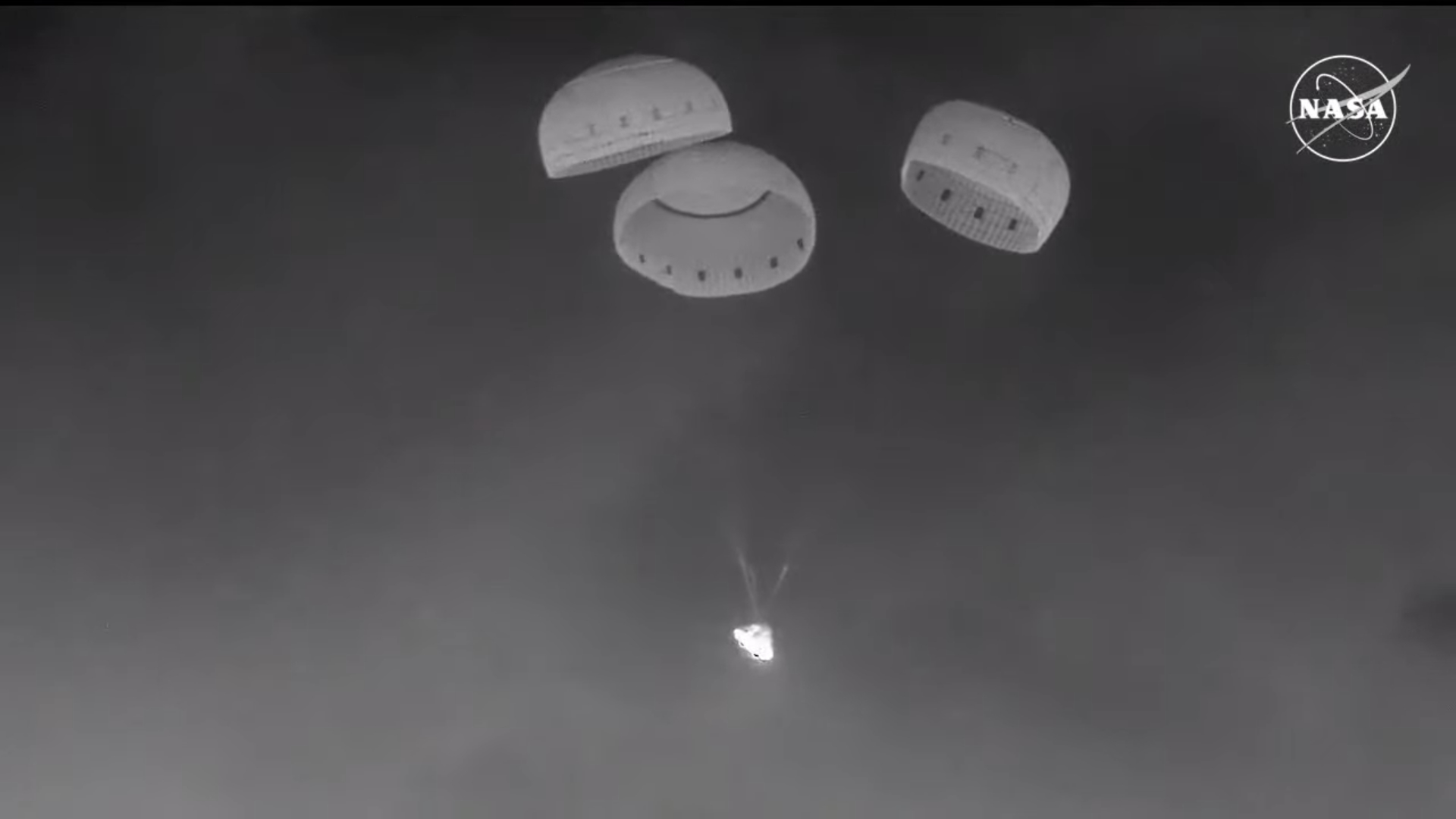
© NASA TV

© RR Auction/NASA via collectSPACE.com

© Daisy Dobrijevic

© NASA/SOFIA/Lynette Cook

© IDW Publishing

© ESA/Webb, NASA & CSA, P. Zeidler, E. Sabbi, A. Nota, M. Zamani (ESA/Webb)

© U.S. Naval Research Laboratory
Supernovae, the violent explosions that occur when stars die, normally happen sporadically within galaxies. However, by shifting the angle of the Hubble Space Telescope’s line of sight toward M87, astronomers recently spotted double the expected amount of supernovae along a massive 3,000-light-year-long jet blasting out of the supermassive black hole at the galaxy’s center. ResearchersContinue reading "Is this black hole jet making stars explode?"
The post Is this black hole jet making stars explode? appeared first on Astronomy Magazine.


© 20th Century Studios
Moshen Chan from San Francisco, California The tail of Comet Tsuchinshan-ATLAS (C/2023 A3) fans out over the Pacific Ocean and the Point Reyes Lighthouse in California. The photographer used a Sony mirrorless camera and 20mm f/1.8 lens to take sixteen 10-second subframes.
The post Lighting the way appeared first on Astronomy Magazine.


© CCTV

© Future/Amazon

© NASA/ESA and Jeff Hester (Arizona State University).
The bright red supergiant star Betelgeuse has long been a familiar sight for star watchers, winking with a ruddy glow from the shoulder of Orion the Hunter. But it’s also an increasingly popular target for professional astronomers thanks to its scientific peculiarities, ranging from pulsations to mysterious dimming events. Now, astronomers think they may haveContinue reading "Betelgeuse may have a Betelbuddy"
The post Betelgeuse may have a Betelbuddy appeared first on Astronomy Magazine.


© CCTV
Author(s): Philip Ball
By observing two fighting fish, researchers have decoded the repertoire of trajectories and body postures used in the interaction—and identified the winner.
[Physics 17, 156] Published Fri Oct 25, 2024

© NASA

© Smithsonian

© NASA

© Robert Lea (created with Canva)
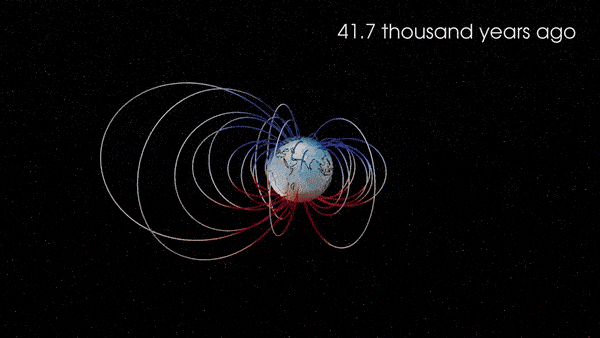
© Animation and science: Maximilian Arthus Schanner and Guram Kervalishvili (GFZ); Sound: Klaus Nielsen (DTU Space)

© Paramount+

© International Gemini Observatory/NOIRLab/NSF/AURA/J. Miller and M. Rodriguez (International Gemini Observatory/NSF NOIRLab)/T. A. Rector (University of Alaska Anchorage/NSF NOIRLab)/M. Zamani (NSF NOIRLab)/Jisu Kang (Seoul National University)

© NASA+
Friday, October 25Venus passes 3° north of Antares at 3 P.M. EDT. The pair is very low in the southwest, but if you’ve got a clear horizon, both should be visible some 40 minutes after sunset. Venus stands out first, glowing a brilliant magnitude –4. Compare its light to dimmer, magnitude 1.1 Antares, to theContinue reading "The Sky This Week from October 25 to November 1: Callisto slips south of Jupiter"
The post The Sky This Week from October 25 to November 1: Callisto slips south of Jupiter appeared first on Astronomy Magazine.

Four NASA astronauts are set to splash down Friday morning after spending more than 200 days aboard the International Space Station (ISS). The four-person crew of NASA’s Crew-8 mission — comprising NASA astronauts Matthew Dominick, Michael Barratt, and Jeanette Epps, and Roscosmos cosmonaut Alexander Grebenkin — will return to Earth around dawn on Friday, splashing downContinue reading "What to watch: NASA Crew-8 astronauts set for early Friday splashdown"
The post What to watch: NASA Crew-8 astronauts set for early Friday splashdown appeared first on Astronomy Magazine.


© Deep Blue Aerospace

© NOAA/NASA

© NASA’s Chandra X-ray Observatory and Adam Block of the University of Arizona’s Mt. Lemmon SkyCenter

© NASA/Bill Ingalls

© NASA/JPL-Caltech/STScI
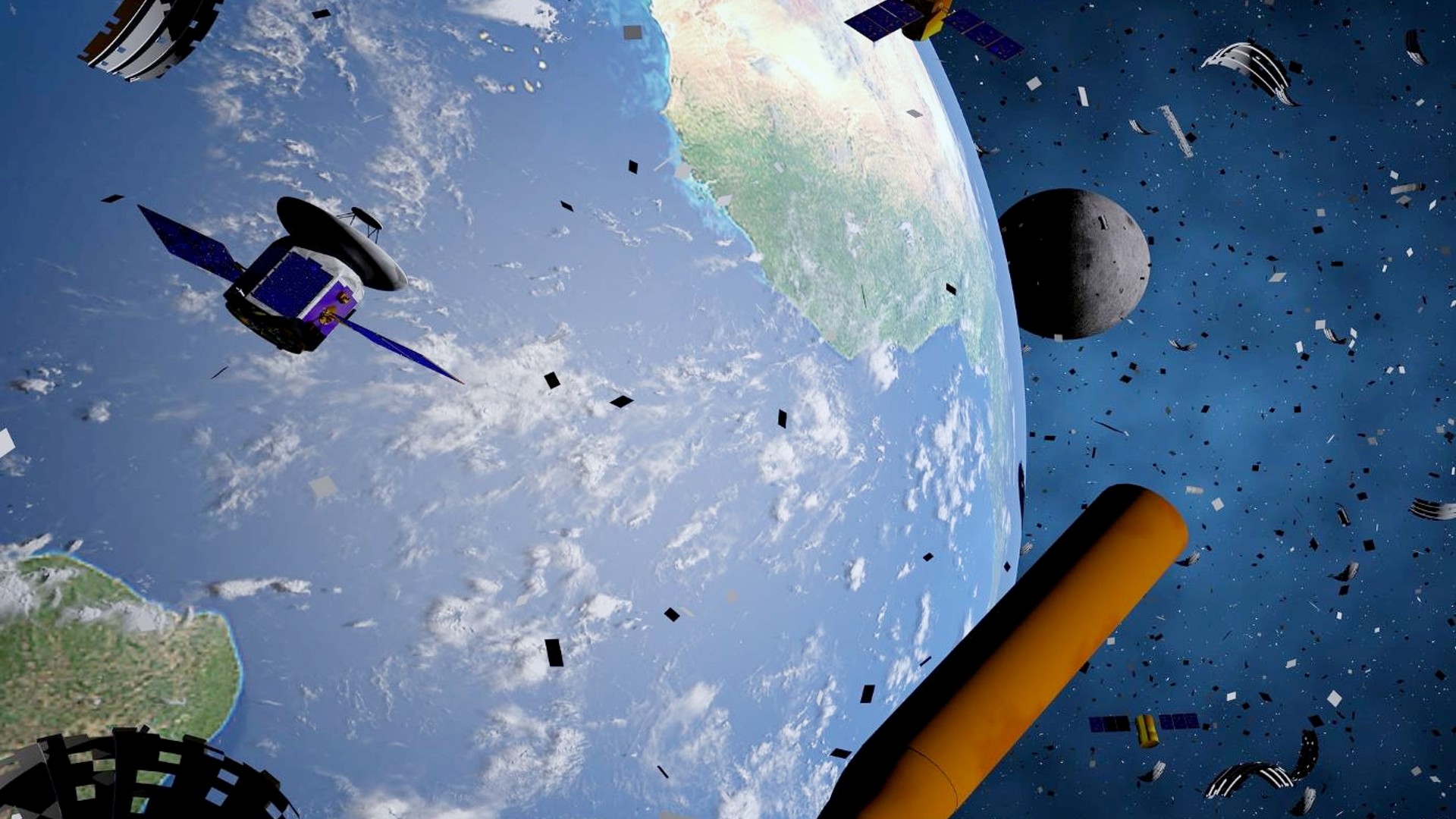
© NASA

© Paramount+
Author(s): Ryan Wilkinson
Theoretical work provides a long-awaited explanation for why measurements of qubits in superconducting quantum computers are less accurate than expected.
[Physics 17, s126] Published Thu Oct 24, 2024
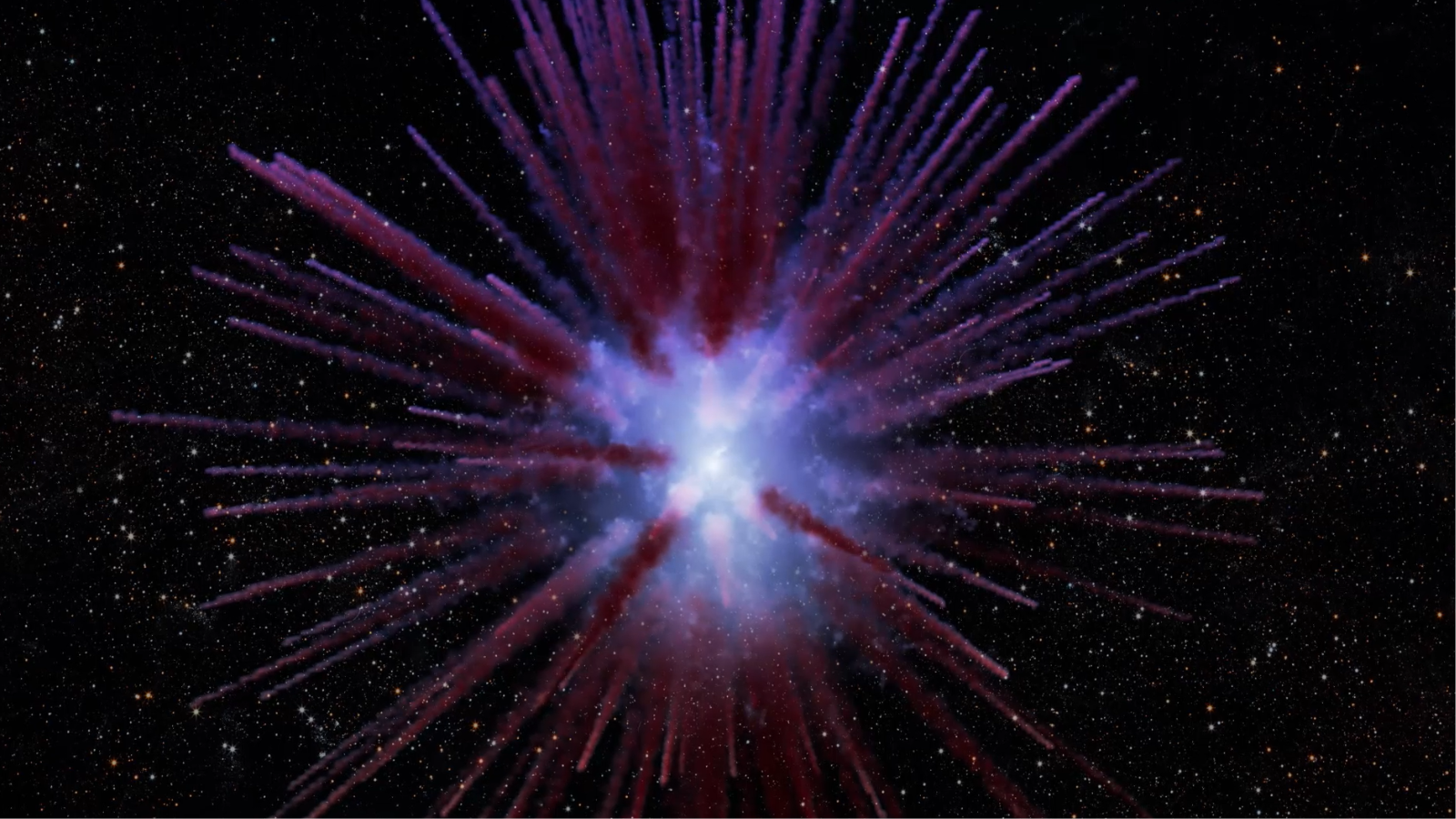
© Adam Makarenko

© Future/Amazon


© Space Solar

© NASA / SDO and the AIA, EVE, and HMI science teams, helioviewer.org

© Astra/NASASpaceflight.com

© Robert Lea (created with Canva)

© SpaceX

© SpaceX

© Hulu

© Space.com / Josh Dinner
The X-Ray Imaging and Spectroscopy Mission (XRISM) isn’t the first of its kind, but the state-of-the-art spectroscopic instruments onboard have opened new doors for high-energy astrophysics. Active galactic nuclei (AGN) — supermassive black holes that actively gobble material and shine brightly in the resulting chaos — have always held mysteries for astrophysicists. Now, a yearContinue reading "XRISM’s data debut proves its extraordinary capabilities"
The post XRISM’s data debut proves its extraordinary capabilities appeared first on Astronomy Magazine.


© Blue Origin/Amaranthine Books/collectSPACE.com

© Paul M.

© Boeing
Lucas Thibaud, taken near Cerro Pachon in Chile The Milky Way serves as a proscenium arch for the zodiacal light and Comet C/2023 A3 (Tsuchinshan-ATLAS) in this panorama taken Oct. 19 from the Chilean Andes. The photographer used a Canon 6Da DSLR and a 20mm f/1.4 lens to take twelve 8-second frames at ISO 1600.
The post Center stage appeared first on Astronomy Magazine.


© Future/Celestron

© 20th Century Studios

© Photo by <a href="https://unsplash.com/@shutter_speed_?utm_content=creditCopyText&amp;utm_medium=referral&amp;utm_source=unsplash">Shutter Speed</a> on <a href="https://unsplash.com/photos/a-toy-shopping-cart-BQ9usyzHx_w?utm_content=creditCopyText&amp;utm_medium=referral&amp;utm_source=unsplash">Unsplash</a>

© NASA

© Sony Pictures
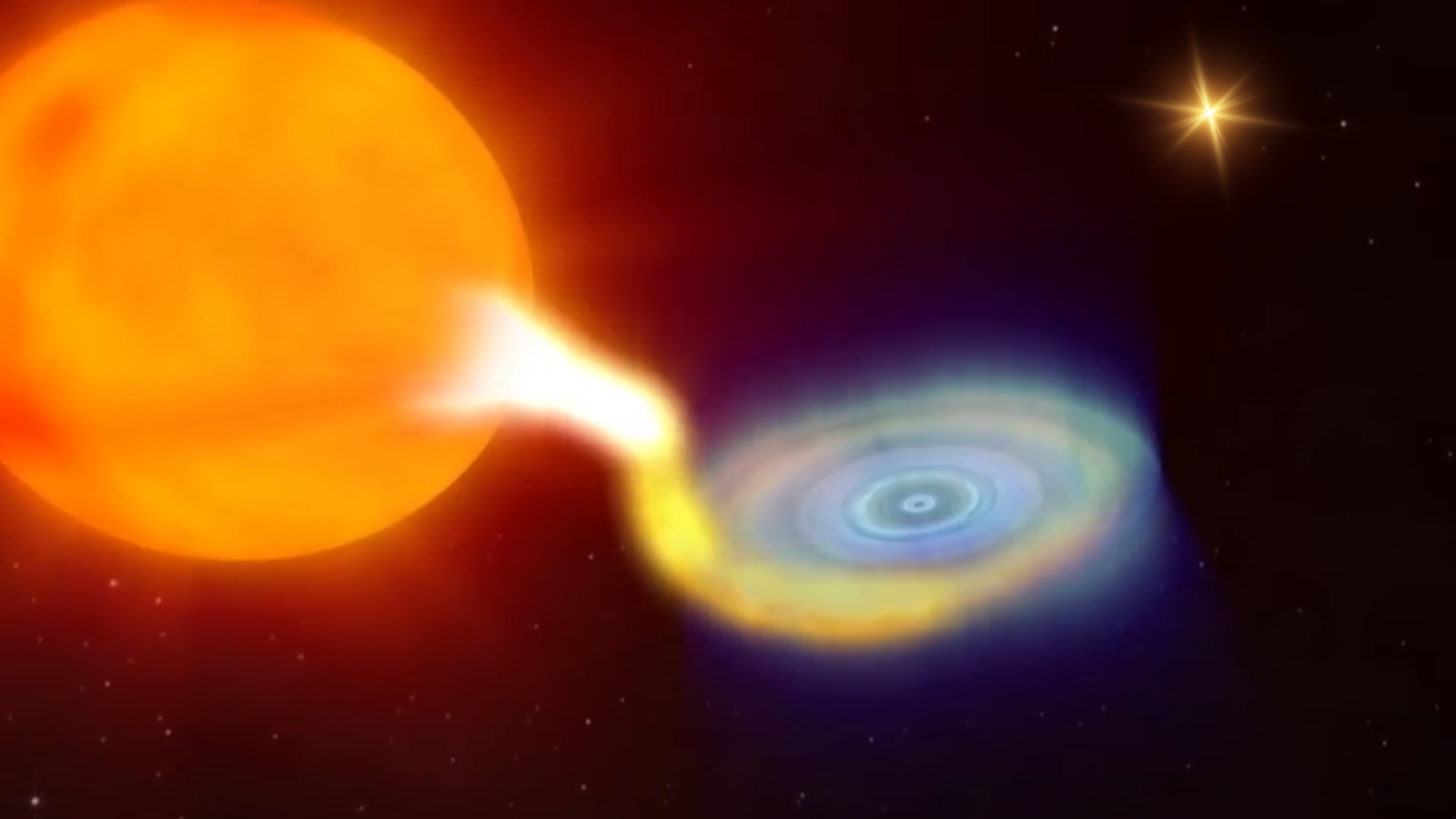
© NASA
Author(s): Christian Roos
A way to address the individual ions of a rotating ion crystal could allow scientists to perform quantum simulations in which each qubit can be carefully controlled.
[Physics 17, 152] Published Wed Oct 23, 2024
Author(s): Marric Stephens
An automatic, algorithmic technique can find optimal laser configurations for inertial-confinement fusion—one of two main fusion approaches.
[Physics 17, s127] Published Wed Oct 23, 2024

© NASA/Don Pettit

© Dark Horse Books

© Netflix

© JAXA

© VCG/VCG via Getty Images

© Christina Eilers/EIGER team

© SpaceX

© SpaceX
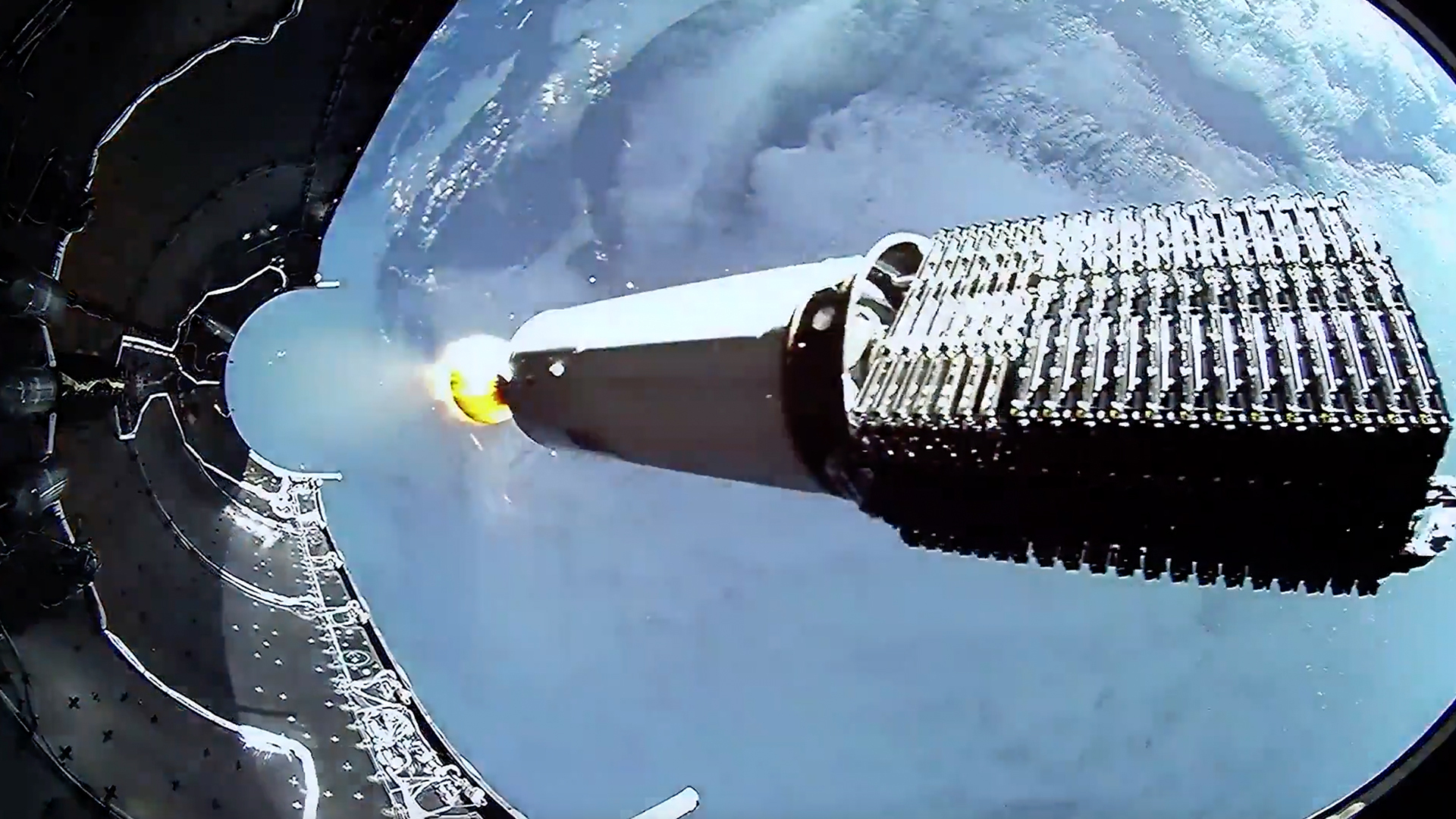
© SpaceX

© Qian Weizhong/VCG via Getty Images
When SpaceX’s Crew Dragon capsule Endeavour returns to Earth this week, she will set a clutch of records for the most time spent in space by a crewed spacecraft. Launched for her fifth mission in March, Endeavour has notched 23 cumulative months in orbit, circled Earth 11,000 times and traveled 292 million miles (470 millionContinue reading "Crew-8 has returned from space on record-breaking SpaceX capsule"
The post Crew-8 has returned from space on record-breaking SpaceX capsule appeared first on Astronomy Magazine.


© Lucy Reading-Ikkanda/Simons Foundation

© NASA/GSFC/University of Arizona
Author(s): Susan Curtis
Applying data mining tools to a rich observational dataset has enabled researchers to track the turbulent plasma clouds that accompany the aurora.
[Physics 17, s128] Published Tue Oct 22, 2024

© Kevin Mazur/Getty Images for iHeartMedia/ Daniel Pomarède, et al. Nature

© Josh Dinner

© Prime Video

© NASA/Caltech-IPAC/Robert Hurt

© NASA

© NASA
MOND یا دینامیک Milgromian یک چارچوب نظری است که پارادایم مادهی تاریک را به چالش میکشد (اینجا بیشتر راجع به مادهی تاریک بخوانید) . MOND که توسط Mordehai Milgrom در دههی ۱۹۸۰ پیشنهاد شد، توضیحی جایگزین برای منحنی چرخش غیرعادی کهکشانها ارائه میکند. طبق قوانین نیوتن، نواحی بیرونی کهکشانها باید کندتر از آنچه که ما مشاهده میکنیم، بچرخند. برای توضیح این مشاهده، معمولاً به وجود مادهی تاریک استناد می شود. ولی MOND پیشنهاد میکند که در شتابهای بسیار کم – کمتر از حدود ۱/۲*۱۰×-۱۰ m/s^2 – برهمکنشهای گرانشی از قوانین نیوتن (مربع معکوس) پیروی نمیکنند و نیروهای گرانشی قویتر از حالت نیوتونی هستند. بدین ترتیب MOND بدون فرض وجود مادهی تاریک میتواند دلیل چرخش سریعتر ستارهها در لبههای بیرونی کهکشانها را توضیح دهد. با وجود آنکه MOND در توضیح برخی پدیدهها در مقیاس کهکشانی موفق بوده است، اما در در توضیح تابش پسزمینهی کیهانی و ساختارهای بزرگ-مقیاس۱ عالم با چالشهای جدی رو بهروست.
به طور کلی ما با رصد آسمان تصویری از جهان به دست میآوریم که برای توضیح این تصویر از مدلهای کیهانشناسی کمک میگیریم. در این مقاله با دو مدل مختلف برای توجیه رصدها آشنا میشویم: مدل استاندارد کیهانشناسی و یا Lambda-CDM و مدل MOND.
تصویری که رصدها از شکلگیری و تحول کهکشانها به ما میدهند یک تصویر کوچکسازی شدهاست؛ بدین صورت که کهکشانهای کمجرم، ستارهزایی ممتد۲ دارند- به عبارت دیگر ستارهزایی آنها از ابتدای شکلگیری کهکشان تاکنون ادامهداشته است درحالیکه کهکشانهای پرجرم بیشتر ستارههای خود را در انتقال به سرخهای بالا (z>2) و در مدت زمان کوتاهی به وجود آوردهاند.
در چارچوب Lambda-CDM، سناریویی برای توضیح این تصویر وجود دارد که سناریوی تشکیل کهکشان دوفازی۳ نامیده میشود. طبق این سناریو، در فاز اول، هستهی کهکشانهای پرجرم از طریق فروپاشی یکپارچهی ابر گازی۴، در زمانهای اولیهی عالم و در مدت زمان خیلی کوتاهی به وجود آمده است. به این هستهی اولیه ناگت قرمز۵ گفته میشود. سپس در فاز دوم به واسطهی برافزایش۶ و ادغامهای کهکشانی۷ سایز کهکشان بزرگ میشود. بدین ترتیب این سناریو میتواند کهکشانهای نوع اولیهی پرجرم۸ در عالم نزدیک۹ را توضیح دهد. این سناریو همچنین پیشبینی میکند که تعداد کمی از ناگتهای قرمز وارد فاز دوم نمیشوند و به صورت دستنخورده تا z~0 باقی میمانند. چنین سیستمهای ستارهای که نمایندهی کهکشانهای خاموش۱۰ و فشرده۱۱ در zهای بالا هستند اخیرا در جهان پیرامون ما مشاهده شدهاند. چنین کهکشانهایی در جهان نزدیک، کهکشان عتیقه نامیده میشوند. اینطور به نظر میرسد که چارچوب Lambda-CDM به خوبی کار میکند اما این چارچوب مشخص نمیکند که چگونه و چرا چنین کهکشانهای پرجرمی در کیهان اولیه و در مدت زمان کوتاهتری نسبت به کهکشانهای کمجرم شکل گرفتهاند.
در این مقاله خواهیم دید که در نظریهی MOND، مقیاس زمانی کوتاه ستارهزایی۱۲ در کهکشانهای نوع اولیهی پرجرم میتواند نتیجهی طبیعی این نظریه تحت یک سری از شرایط خاص باشد.
در کیهانشناسی، شبیهسازیهایی برای فروپاشی ابرهای گازی پس از مهبانگ۱۳ بر اساس MOND وجود دارد. این شبیهسازیها نشان میدهند که با فروپاشی ابرهای گازی چرخان، خصوصیات رصدی کهکشانهای دیسکی قابل بازیابی است. اما آنها همزمان این را هم نشان میدهند که چنین کهکشانهایی ممکن است عمدهی جرم ستارهای خود را اخیرا از طریق ادغام کهکشانهای ستارهزا به دست آورده باشند. نویسندگان این مقاله با استناد به نتایج مقالات سالوادور و همکاران ۲۰۲۲ و افتخاری و همکاران ۲۰۲۲ ادعا میکنند که چنین نتیجهای در تضاد با رصدهای کهکشانی هست. این دو مقاله با استفاده از طیف فرابنفش نزدیک، اپتیکی و فروسرخ نزدیک کهکشانهای نوع-اولیهی پرجرم و همچنین یک کهکشان عتیقه نشان دادهاند که اکثر ستارههای کهکشانهای پرجرم نوع اولیه پیر هستند و تحول این کهکشانها تا به امروز منفعل بودهاست. بنابراین آنها علاوه بر شبیهسازیهای ابرهای گازی چرخان، کهکشانهای حاصل از شبیهسازیهای ابرهای گازی غیرچرخان را هم مورد مطالعه قرار دادند و مشاهده کردند که کهکشانهای حاصل مقیاس زمانی ستارهزایی کوتاهی مشابه کهکشانهایی که رصد شدهاند، دارند. به عبارت دیگر، چارچوب MOND با فروپاشی ابرهای گازی غیرچرخان پس از بیگ بنگ میتواند کهکشانهای پرجرمی با مقیاس زمانی ستارهزایی کوتاهی مشابه رصدها تولید کند.
نویسندگان یکی از کهکشانهای مدل را که از طریق فروپاشی یکپارچهی یک ابر گازی غیرچرخان شکل گرفتهاست را انتخاب کرده و سینماتیک و پروفایل چگالی جرم ستارهای آن را با کهکشانهای پرجرم فشردهی عتیقه مقایسه میکنند و ثابت میکنند که حاصل شبیهسازی MOND برای ابر گازی غیرچرخان یک کهکشان عتیقه هست که مقیاس زمانی ستارهزایی کوتاهی دارد. کهکشانهای عتیقهی رصدشدهای که آنها در این مطالعه استفاده کردهاند NGC 1277، Mrk 1216 و PGC 032873 میباشند که از مطالعات تروخیو و همکاران ۲۰۱۴ و فر-متیو و همکاران ۲۰۱۷ گرفته شدهاند.
آنها پروفایل سرعت چرخشی کهکشان مدل MOND را با کهکشانهای عتیقهی رصد شده مقایسه میکنند (شکل ۱). برخلاف کهکشانهای نوع اولیهی معمولی، کهکشانهای عتیقه سرعت چرخشی بالایی دارند و کهکشان مدل نیز از این الگو پیروی میکند.
نویسندگان همچنین پروفایل پراکندگی سرعت۱۴ کهکشان مدل را با کهکشانهای عتیقه مقایسه میکنند. شکل ۲ نشان میدهد که کهکشانهای عتیقهی رصد شده پراکندگی سرعت بالایی دارند و سرعت بیشینه در مرکز کهکشان مدل، مشابه کهکشانهای عتیقه هست اما افت سرعت کهکشان مدل مانند آنها نیست؛ به خصوص که بیشترین تقاوت مربوط به کهکشان NGC1277 هست. نویسندگان ادعا میکنند که این به دلیل اثر میدان خارجی۱۵ میتواند باشد. به عبارتی کهکشان مدل یک کهکشان ایزوله هست در حالیکه کهکشان NGC1277 در یک خوشهی کهکشانی قرار دارد.
از آنجاییکه مطالعات تروخیو و همکاران ۲۰۱۴ و فر-متیو و همکاران ۲۰۱۷ نشان دادهاند که کهکشانهای عتیقه، پروفایل چگالی جرمی ستارهای متفاوتی نسبت به کهکشانهای نوع اولیهی معمولی دارند (برای مثال کهکشان NGC 1277 پروفایل چگالتری درون شعاع موثر۱۶ خود دارد)، نویسندگان پروفایل چگالی سطحی کهکشان مدل را با کهکشانهای عتیقهی رصد شده هم مقایسه کردهاند. شکل ۳ نشان میدهد که کهکشان مدل پروفایل مشابهی با کهکشانهای عتیقه دارد. بدین ترتیب نویسندگان ثابت میکنند که کهکشانی که در چارچوب MOND شکل گرفته است درواقع یک کهکشان عتیقه هست که مقیاس زمانی ستارهزایی کوتاهی دارد.
نتیجهگیری آنها این است که در چارچوب MOND فروپاشی ابر گازی غیرچرخان پس از بیگ بنگ موجب شکلگیری کهکشانهایی با سرعت چرخشی و سرعت پراکندگی بالا، مشابه کهکشانهای عتیقهی رصد شده میشود. بنابراین این کهکشانها مانند کهکشانهای عتیقه مقیاس زمانی ستارهزایی کوتاهی دارند.
چارچوب نظری MOND حتی میتواند پدید آمدن سریع اختروشها۱۷ و سیاهچالههای ابرپرجرم۱۸ را هم توجیه کند؛ بدین صورت که فروپاشیاولیهی ابر گازی ابتدا یک خوشهی ستارهزا و پرجرم را در مرکز شکل میدهد.تابع جرم اولیهی۱۹ این خوشهی ستارهزا به گونهای است که ستارههای پرجرم زیادی نسبت به ستارههای کمجرم دارد (به دلیل فلزیت کم و چگالی زیاد) و ممکن است به صورت یک شبه اختروش ظاهر شود (اینجا، اینجا و اینجا بیشتر راجع به تابع جرم اولیه بخوانید). ستارههای یونیزهکننده یک میدان تابشی شبه اختروش بهوجود میآورند که خوشه را از سقوط گاز بیشتر محافظت میکند. از آنجاییکه خوشه دارای تعداد زیادی ستارهی پرجرم است که به سرعت متحول میشوند، پس از ۵۰ میلیون سال ستارهها میمیرند و آنچه باقی میماند جمعیت زیادی از سیاهچالهها است. سپس این خوشه از سیاهچالهها گاز بیشتری را میبلعند و منقبض میشوند تا زمانیکه دچار فروپاشی شده و یک سیاهچالهی ابرپرچرم را تشکیل میدهند. نویسندگان محاسبه کردهاند که کل این فرآیند در زمان کمتری نسبت به مقیاس زمانی تشکیل کهکشان طول میکشد. بدین ترتیب MOND پدید آمدن سریع اختروشها و سیاهچالههای ابرپرجرم را توجیه میکند.
۱. Large Scale Structures
۲. Extended Star Formation History
۳. Two-Phase Galaxy Formation Scenario
۴. Monolithic Collapse of Gas Clouds
۵. Red Nuggets
۶.Accretion
۷. Mergers
۸. Massive Early-Type Galaxies
۹. Nearby Universe
۱۰. Quiescent Galaxies
۱۱. Compact Galaxies
۱۲. Star Formation Timescale
۱۳. Big Bang
۱۴.Velocity Dispersion
۱۵. External Field Effect
۱۶. Effective Radius
۱۷. Quasars
۱۸. Super Massive Blackholes
۱۹. Initial Mass Function
شکل بالای صفحه: سمت راست کهکشان عتیقهی NGC 1277 را در مرکز نشان میدهد و سمت چپ منحنی چرخشی کهکشان NGC 1560 را نشان میدهد که به خوبی با نظریهی MOND بدون فرض وجود مادهی تاریک بازسازی شدهاست. https://owlcation.com/stem/Theories-on-Dark-Matter-and-Dark-Energy و https://www.esa.int/ESA_Multimedia/Images/2018/03/A_red_metal-rich_relic
عنوان اصلی مقاله: The formation of compact massive relic galaxies in MOND
نویسندگان: Eappen & Kroupa
لینک اصلی مقاله: https://arxiv.org/abs/2402.00103
گردآوری: الهام افتخاری
Comet C/2023 A3 — better known as Tsuchinshan-ATLAS — is fading in brightness as it speeds away from the Sun and Earth in the evening sky. It’s still visible to the naked eye in a dark sky, and it’s certainly an easy target for binoculars. But now’s your last chance to see it — soContinue reading "Can you still see Comet Tsuchinshan-ATLAS?"
The post Can you still see Comet Tsuchinshan-ATLAS? appeared first on Astronomy Magazine.


© SXS (Simulating eXtreme Spacetimes) Project
In this episode, Dave Eicher invites you to observe one of the major meteor showers of the year. It’s called the Orionids because all the meteors seem to come from a spot in the constellation Orion the Hunter. The meteor activity will peak in the early morning hours of October 21. If you can’t getContinue reading "The Orionid meteor shower: This Week in Astronomy with Dave Eicher"
The post The Orionid meteor shower: This Week in Astronomy with Dave Eicher appeared first on Astronomy Magazine.


© Archetype Entertainment
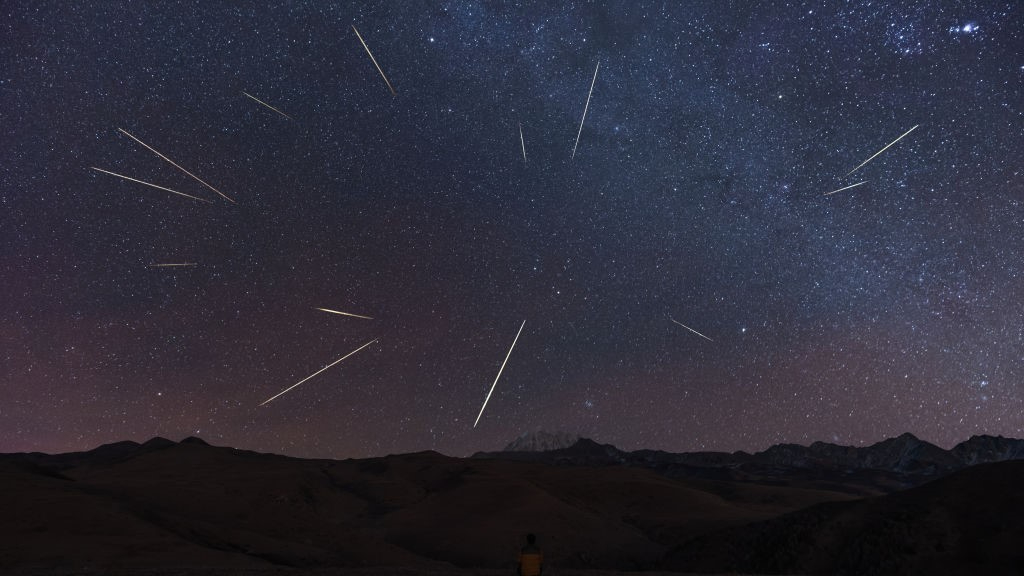
© Costfoto/Future Publishing via Getty Images

© 20th Century Studios

© Nicolas Rasmont/University of Illinois Urbana-Champaign

© Getty Images

© Blackstone Publishing

© Disney+
Author(s): Sophia Heinz
Scientists have synthesized an isotope of the superheavy element livermorium using a novel fusion reaction. The result paves the way for the discovery of new chemical elements.
[Physics 17, 150] Published Mon Oct 21, 2024
Aldo Rocco Vitale taken from Sicily, Italy This shot of Comet Tsuchinshan-ATLAS (C/2023 A3) was taken Oct. 14 from the southern flank of Mount Etna in Piano Vetore at an elevation of 5,700 feet (1750 m). The different hues come from the two tails — one of dust (orange-yellow in this shot) and one ofContinue reading "Blazing star"
The post Blazing star appeared first on Astronomy Magazine.


© Martin Vardic

© Doritos via collectSPACE.com

© Warner Bros. Pictures
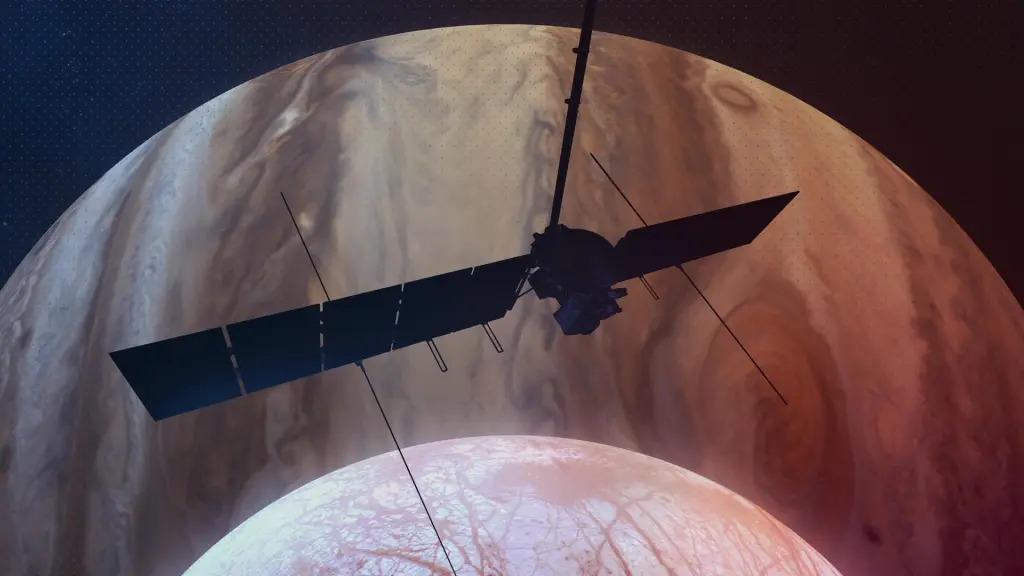
© NASA

© NASA/Daniel Rutter

© Atticus Films

© Max Space

© Paramount+
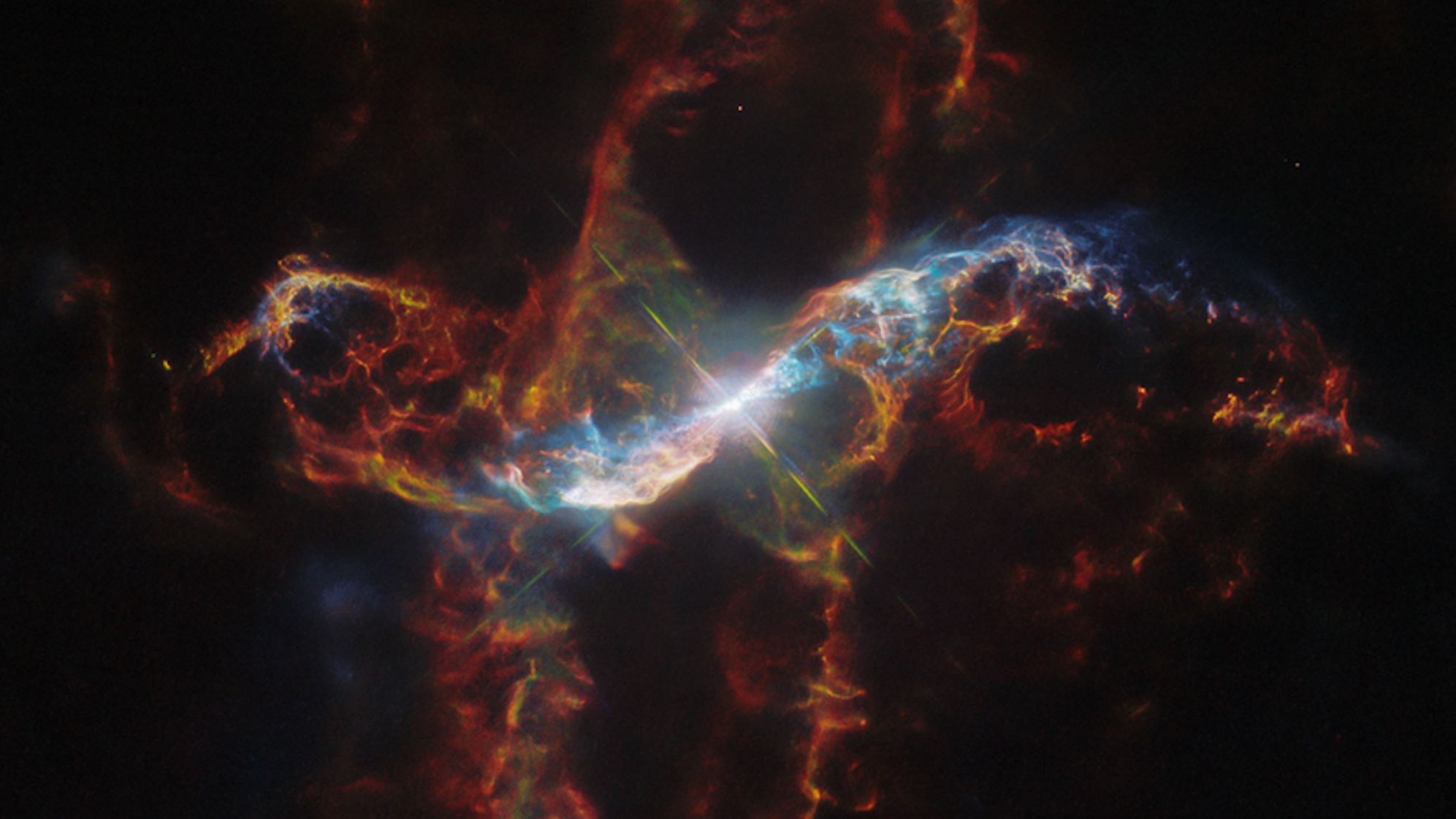
© NASA, ESA, Matthias Stute , Margarita Karovska , Davide De Martin (ESA/Hubble), Mahdi Zamani (ESA/Hubble)

© SpaceX

© Futute/Bethesda

© TWiT

© NASA/Chris Gunn

© SpaceX via X

© 20th Century Studios

© HBO

© SpaceX

© SpaceX via X

© Sega

© UCLA EPSS/NASA SVS

© Netflix

© Sierra Space

© Shoreline Films via collectSPACE.com
Author(s): Michael Schirber
A new method for studying the behavior of multiparticle systems relies on a simple “head count” of particles in imaginary boxes.
[Physics 17, 153] Published Fri Oct 18, 2024

© OHB Italia
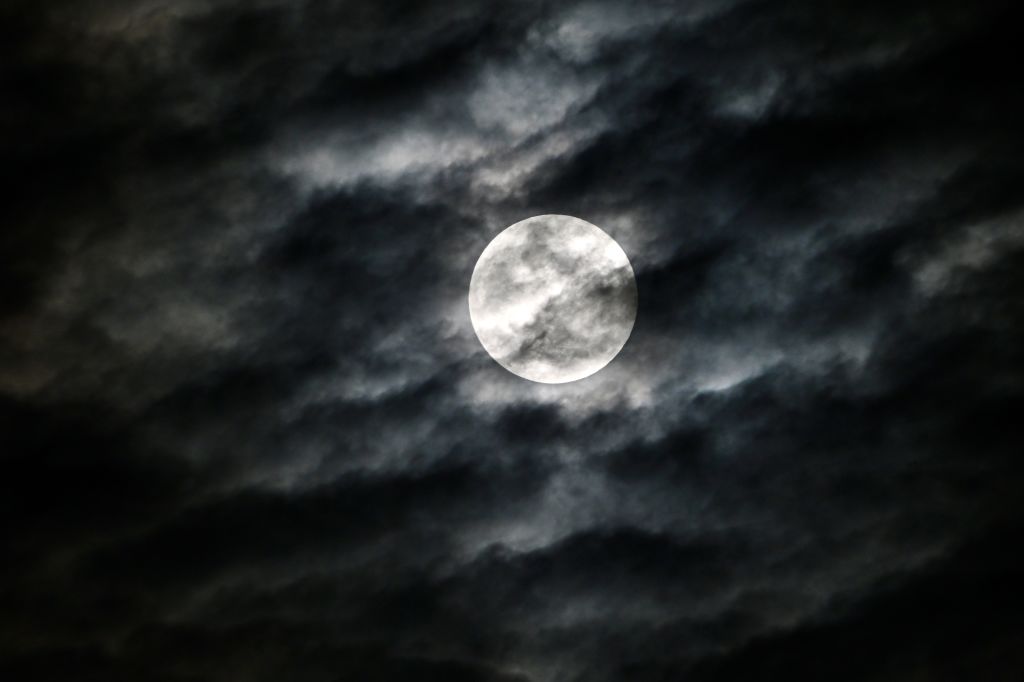
© Getty Images/China News Service

© Aditya Madhavan
John Vermette, taken from Saguaro National Park near Tucson, Arizona Comet C/2023 A3 is pictured here Oct. 15. The image is a stack of twenty-six 3-second shots with a 50mm f/1.4 lens at ISO 3200.
The post Comet and cactus appeared first on Astronomy Magazine.

Getting started in astrophotography can be daunting. With so many different telescopes, cameras, and mounts and all their variations, where do you start? The first piece of equipment you should choose is a mount, the mechanical base that the telescope attaches to. For astrophotography, the mount must be motorized, and ideally computer-controllable. This might soundContinue reading "Finding your first astroimaging rig"
The post Finding your first astroimaging rig appeared first on Astronomy Magazine.


© VCG/VCG via Getty Images

© NASA/JPL-Caltech
Friday, October 18There’s still time to catch Comet C/2023 A3 (Tsuchinshan-ATLAS) in the west after sunset, even as it pulls away from the Sun and Earth on its way back toward the outer reaches of the solar system. Currently hovering between 1st and 2nd magnitude, the comet can be spotted with naked eyes from aContinue reading "The Sky This Week from October 18 to 25: The Orionid meteors peak"
The post The Sky This Week from October 18 to 25: The Orionid meteors peak appeared first on Astronomy Magazine.


© Josh Dinner/Future

© ESA-ATG

© Carolco Pictures
Comet C/2023 A3, also known as Tsuchinshan-ATLAS, has been in the evening sky for a week now. If you haven’t seen it, that’s understandable because there’s also been a bright Moon in the sky. But the Moon is Full tonight (Oct. 17) and will rise later tomorrow (Oct. 18) and each night thereafter. So, tryContinue reading "See Comet Tsuchinshan-ATLAS while you still can"
The post See Comet Tsuchinshan-ATLAS while you still can appeared first on Astronomy Magazine.


© Space Perspective

© ESA
The Milky Way galaxy has had a violent history. It did not grow though simple and calm accretion, but rather through the aggressive mergers of multiple smaller galaxies. Recently, a team of astronomers found the remnants of perhaps the oldest merger, right in our stellar neighborhood. The Milky Way’s stars have a wide variety ofContinue reading "A baby Milky Way may have swallowed a dwarf galaxy named Loki"
The post A baby Milky Way may have swallowed a dwarf galaxy named Loki appeared first on Astronomy Magazine.


© SpaceX via X
Author(s): Charles Day
Axions—theorized particles that could account for dark matter—could accumulate around rapidly rotating neutron stars to the point that they become detectable.
[Physics 17, s114] Published Thu Oct 17, 2024
Author(s): Ryan Wilkinson
The prediction that twisted semiconductor bilayers can host so-called non-Abelian states without a magnetic field holds promise for fault-tolerant quantum computing.
[Physics 17, s129] Published Thu Oct 17, 2024

© China National Space Administration

© NASA/JPL-Caltech/University of Arizona.

© Ubisoft

© Paramount+

© Zabed Hasnain Chowdhury/NurPhoto/David McNew/Getty Images

© SpaceX

© Andrew Jones/Space.com

© NASA

© NASA
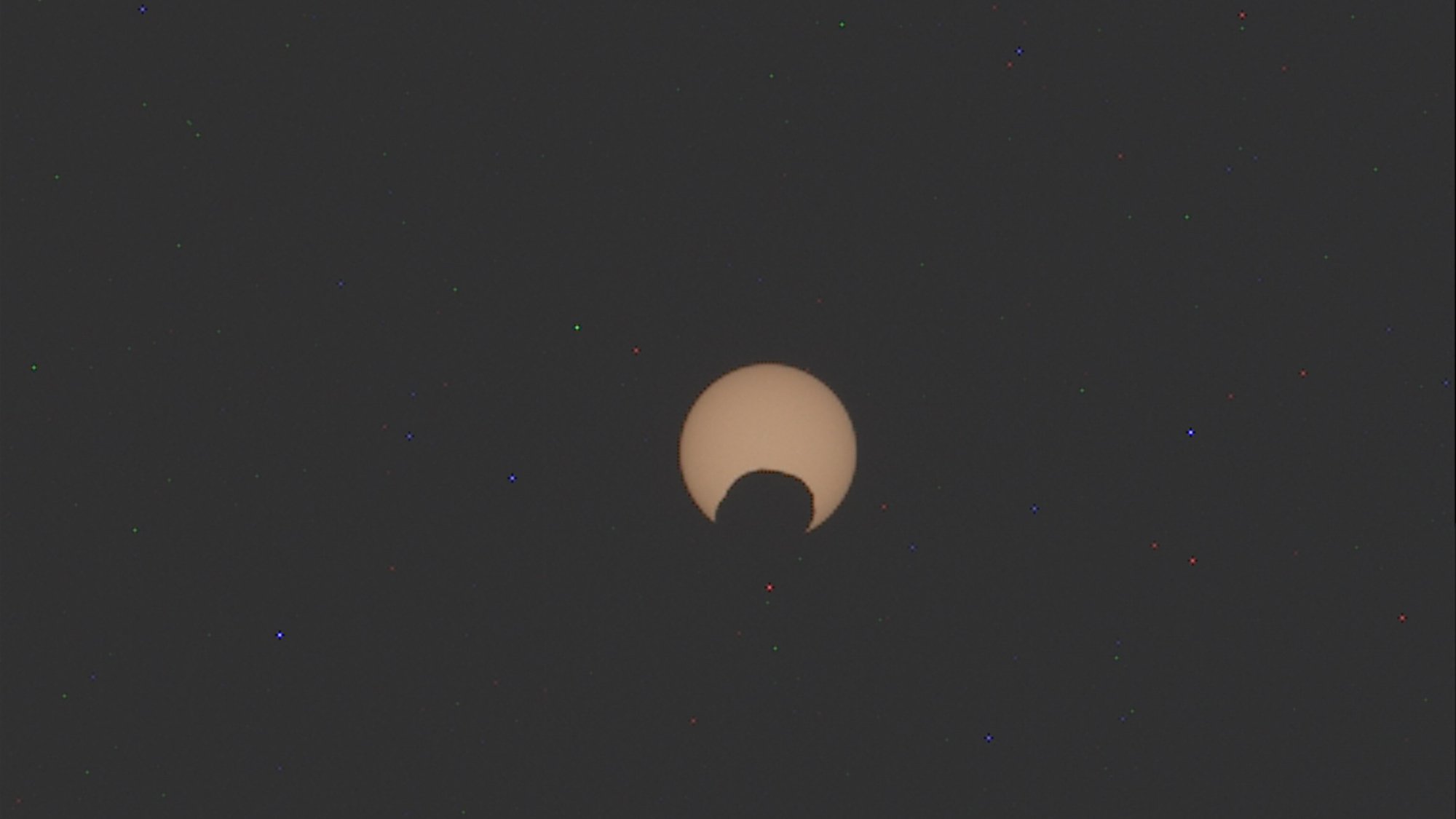
© NASA/JPL-Caltech/ASU

© NASA/MAVEN/The Lunar and Planetary Institute
A pair of papers published today in Nature look at the origins of many meteorites that have fallen to Earth. By examining the detailed makeup of the rocks, ascertaining the time that has passed since they broke off larger bodies, and comparing these to asteroids in space, researchers found evidence that a great majority ofContinue reading "Most meteorites come from just three sources"
The post Most meteorites come from just three sources appeared first on Astronomy Magazine.

Author(s): Charles Day
Emus inherited from their dinosaur ancestors a crouched posture that dictates the gait they adopt when moving quickly, according to a new computer simulation of bird motion.
[Physics 17, 151] Published Wed Oct 16, 2024

© Disney
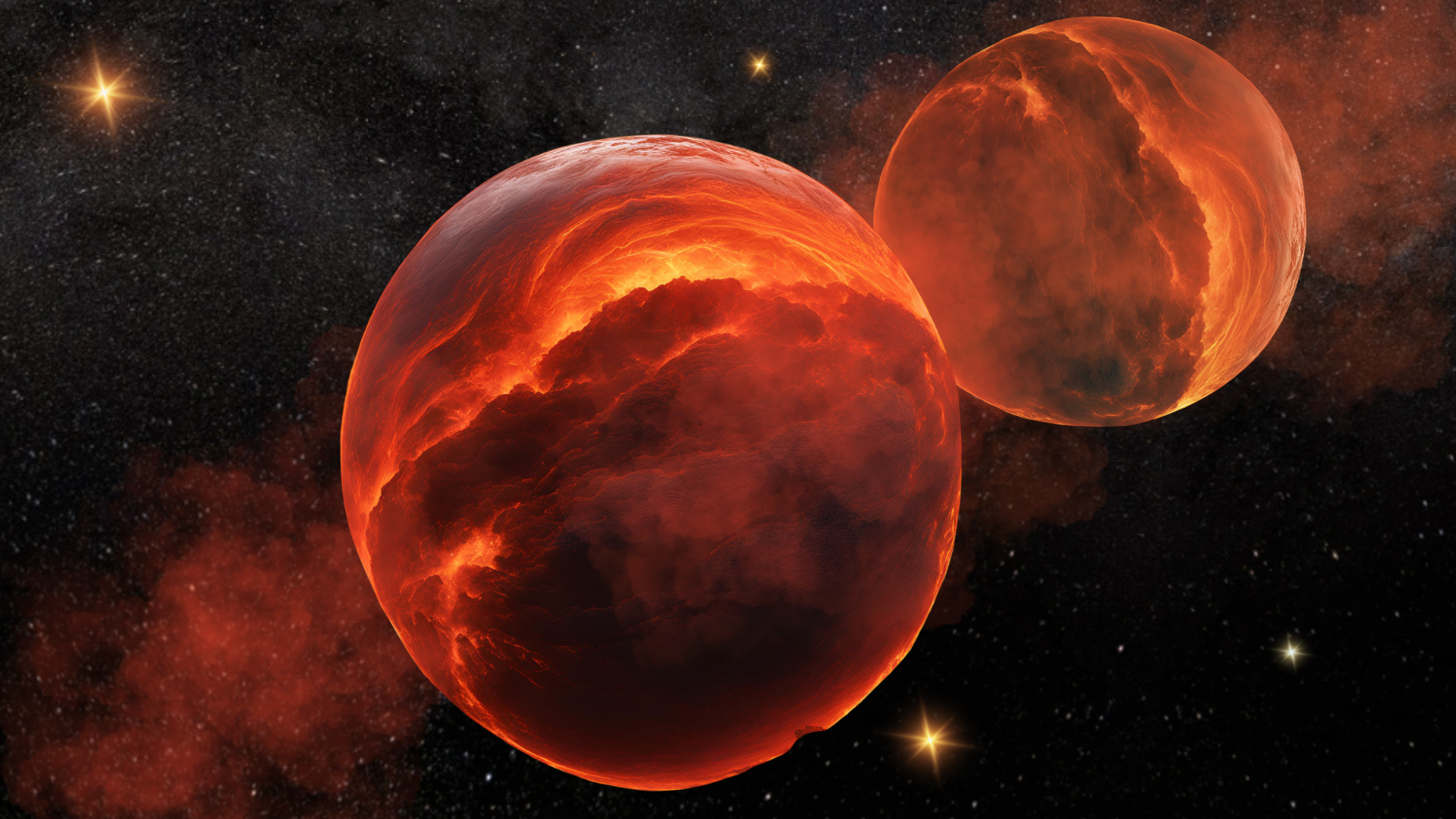
© Robert Lea (created with Canva)
Author(s): Marric Stephens
Theorists have developed a model to explain how a protein structure keeps its position while being buffeted by currents.
[Physics 17, s125] Published Wed Oct 16, 2024
In a teleconference Oct. 15, representatives from NASA and the National Oceanic and Atmospheric Administration (NOAA) announced that the Sun has reached the peak level in its current cycle of activity, the 25th for which humans have kept detailed records. The 25th cycle has been far more active than the previous one, especially this year,Continue reading "The Sun has reached solar maximum, NASA and NOAA scientists say"
The post The Sun has reached solar maximum, NASA and NOAA scientists say appeared first on Astronomy Magazine.

Chris Schur, taken from Payson, Arizona Bright comets like Tsuchinshan-ATLAS (C/2023 A3) — captured here with an 6-minute exposure on an 8-inch RASA — sometimes develop an anti-tail. This secondary tail appears to protrude forward from the comet’s nucleus in the opposite direction of the “normal” tail. An anti-tail is a perspective effect created whenContinue reading "Tsuchinshan-ATLAS’ anti-tail"
The post Tsuchinshan-ATLAS’ anti-tail appeared first on Astronomy Magazine.


© Smithsonian/collectSPACE.com

© Axiom Space

© SpaceX via X

© NASA

© Space.com/ Josh Dinner
BENTONVILLE, Arkansas — The first private spacewalk, an on-orbit symphonic performance, and nearly 40 scientific research experiments. Those were just a few highlights of September’s Polaris Dawn mission: a five-day, four-person orbital spaceflight purchased from SpaceX and commanded by Jared Isaacman, the billionaire CEO of Shift4 Payments. But Isaacman — now a SpaceX “frequent flier”Continue reading "Polaris Dawn crew talks mission highlights, next steps"
The post Polaris Dawn crew talks mission highlights, next steps appeared first on Astronomy Magazine.


© NASA
These fleeting beacons from the outer solar system make for fantastic shots.
The post Beginner’s guide: How to photograph comets appeared first on Astronomy Magazine.

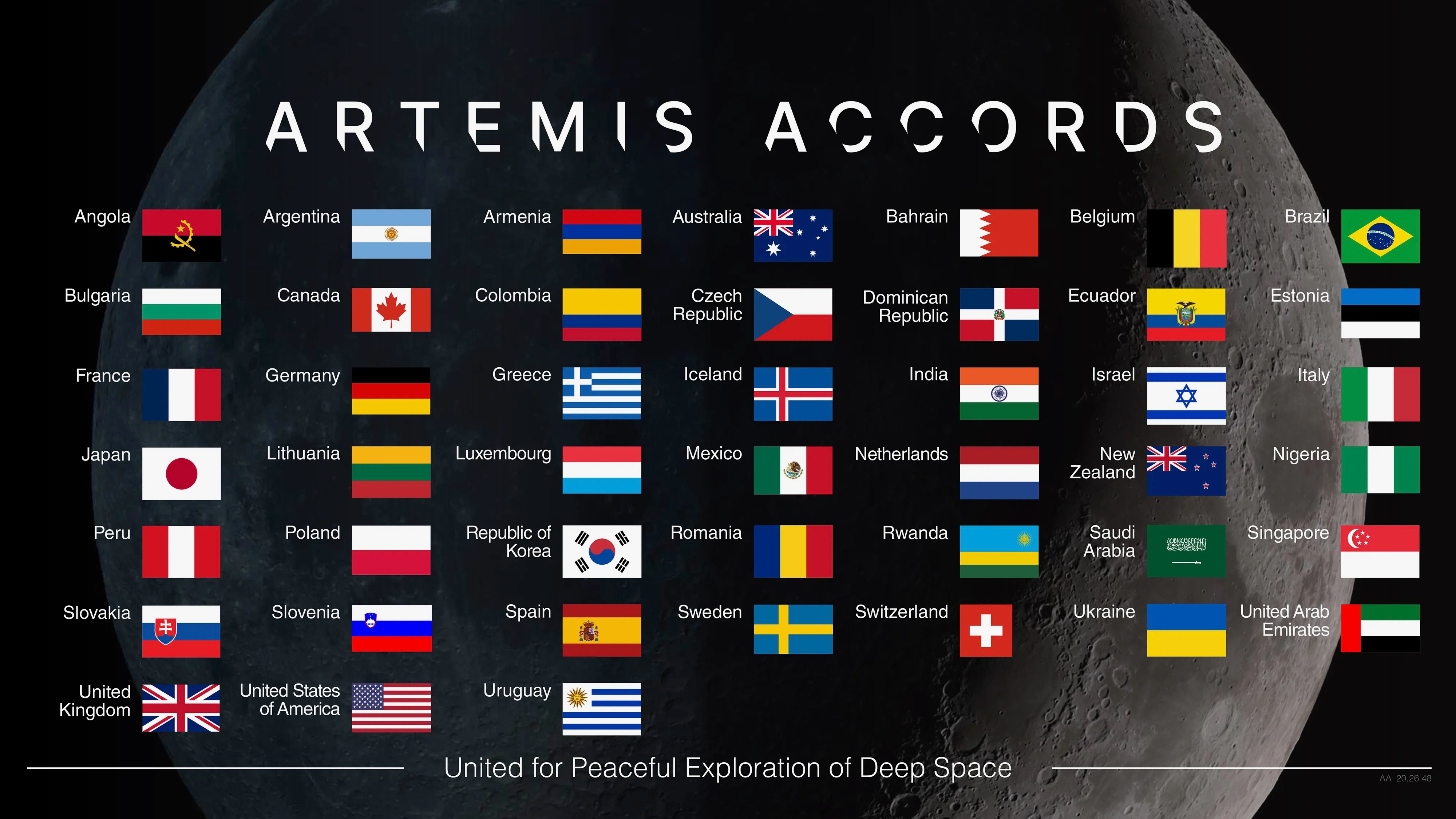
© NASA

© VAST

© SpaceX
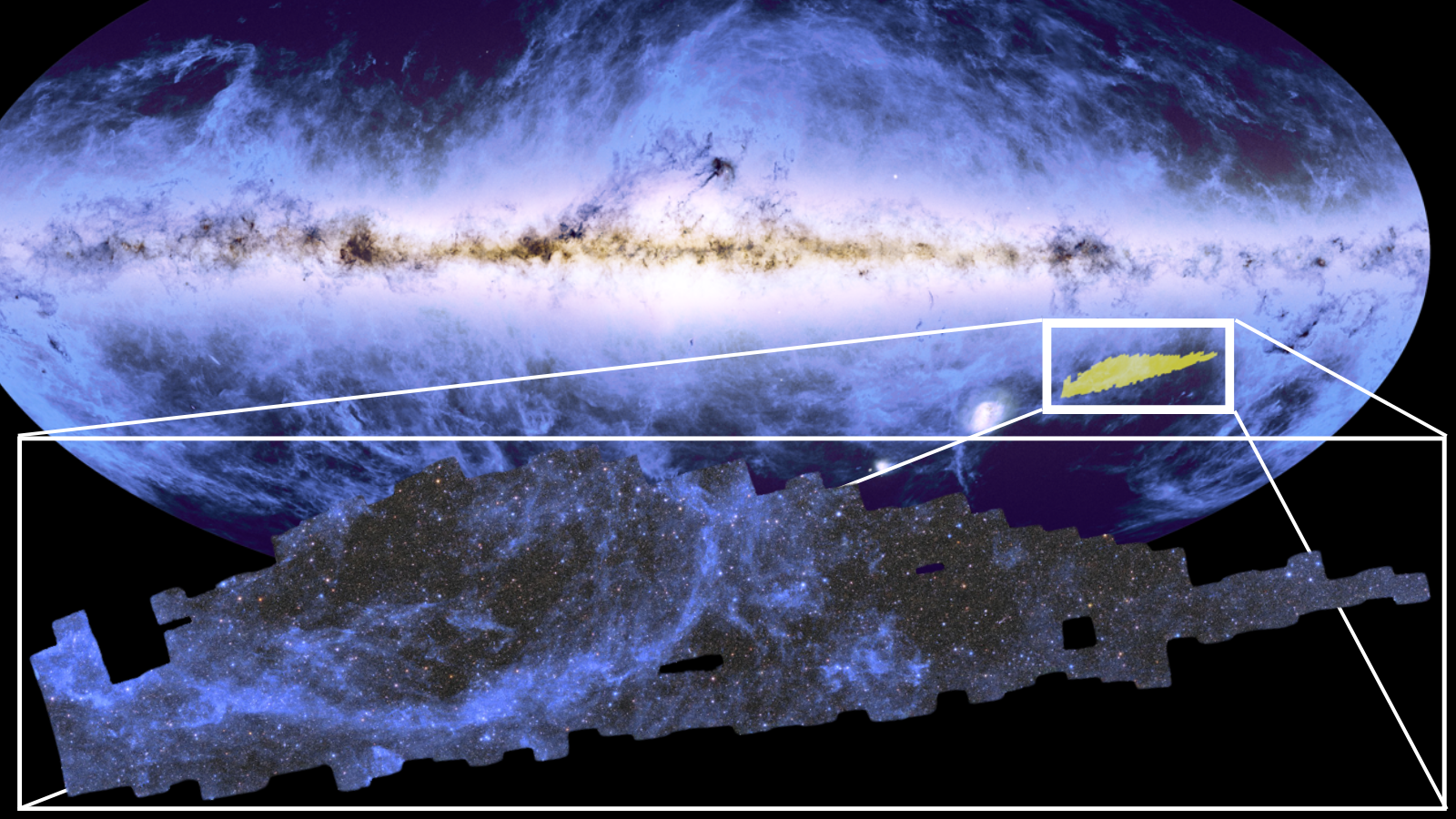
© ESA/Euclid/Euclid Consortium/NASA, CEA Paris-Saclay, image processing by J.-C. Cuillandre, E. Bertin, G. Anselmi CC BY-SA 3.0 IGO

© DAMIEN MEYER/AFP via Getty Images
The Euclid space observatory launched in July 2023, tasked with creating a 3D map of more than a third of the sky, surveying billions of galaxies up to 10 billion light-years away. Today, scientists revealed the first page in its cosmic atlas, a mosaic comprising 208 gigapixels of data revealing billions of galaxies in awesomeContinue reading "Euclid releases stunning first map of the deep sky"
The post Euclid releases stunning first map of the deep sky appeared first on Astronomy Magazine.

Author(s): Fangwei Ye
Overlapping two 3D lattices with a relative twist opens the door to synthesizing crystals with diverse symmetries that showcase nontrivial band structures and novel properties.
[Physics 17, 147] Published Tue Oct 15, 2024
Author(s): Charles Day
A quantum degeneracy named after a Chinese yo-yo boosts the magnetization lifetime of a short chain of magnetic iron atoms by a factor of 1000.
[Physics 17, s118] Published Tue Oct 15, 2024

© Sen

© ESA
Once again, we’ve scoured the astro-marketplace to find the finest, most practical, and most innovative products for Astronomy magazine’s Star Products, 2024 edition. This collection of 35 items, in no particular order, offers a diverse selection. From tools tailored for visual observing to those crafted for astrophotography, there’s something here for everyone, whether you’re aContinue reading "Astronomy’s 14th annual star products"
The post Astronomy’s 14th annual star products appeared first on Astronomy Magazine.


© Victor Habbick Visions/Science Photo Library via Getty Images

© Paul Fleet / shutterstock

© IllFonic

© National Geographic
SpaceX’s Starship program—responsible for developing the largest and most powerful rocket ever flown—continues to make history. On Sunday, Starship and the Super Heavy booster lifted off around 8:25 a.m. EST from SpaceX’s Starbase launch pad in Boca Chica, Texas, on the rocket’s fifth suborbital test flight. But rather than splash down in the Gulf ofContinue reading "SpaceX achieves historic booster catch during Starship test"
The post SpaceX achieves historic booster catch during Starship test appeared first on Astronomy Magazine.


© Ian Stokes

© Julien's Auctions

© Illustration by NASA/Daniel Rutter
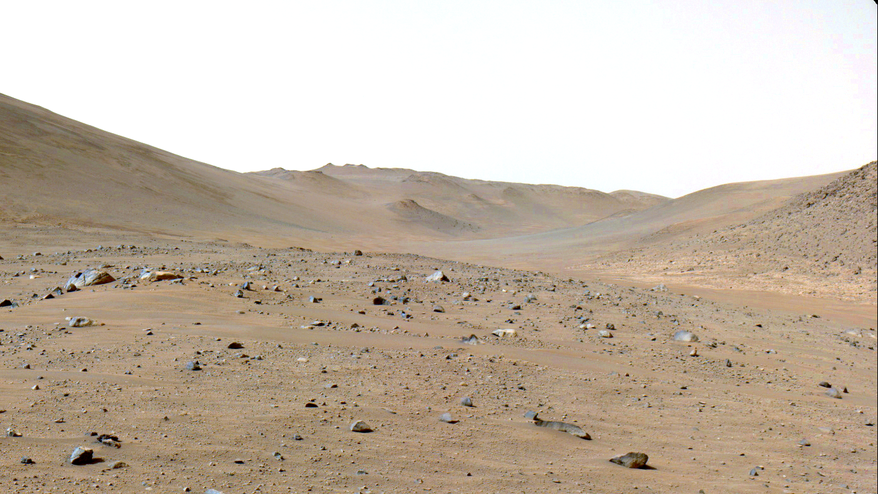
© NASA

© SpaceX

© NASA TV
In this episode, Dave Eicher invites you to observe a close meeting of the Moon and the ringed planet, Saturn. This celestial meet-up will take place on the evening of Oct. 14. You won’t need binoculars or a telescope to view it, although binoculars may give a more pleasing view. Head out an hour afterContinue reading "The Moon meets Saturn: This Week in Astronomy with Dave Eicher"
The post The Moon meets Saturn: This Week in Astronomy with Dave Eicher appeared first on Astronomy Magazine.


© X-ray: NASA/CXC/Queen's Univ. Belfast/M. Nicholl et al.; Optical/IR: PanSTARRS, NSF/Legacy Survey/SDSS; Illustration: Soheb Mandhai / The Astro Phoenix; Image Processing: NASA/CXC/SAO/N. Wolk
Philippe Moussette The aurora dances above the Cap-Rouge trestle bridge in Quebec City the night of Oct. 10/11.
The post An auroral cape appeared first on Astronomy Magazine.


© California Science Center
How much color should I be able to see in sky objects through a 10-inch telescope? Dennis HoltConcordia, Kansas Unfortunately, when you look at distant galaxies and nebulae, you won’t see much color through your telescope. That’s because you’re viewing objects that are too faint to trigger your eyes’ color receptors. This is the sameContinue reading "Will my telescope show color when viewing deep-sky objects?"
The post Will my telescope show color when viewing deep-sky objects? appeared first on Astronomy Magazine.


© Warner Bros.

© NASA/JPL-Caltech
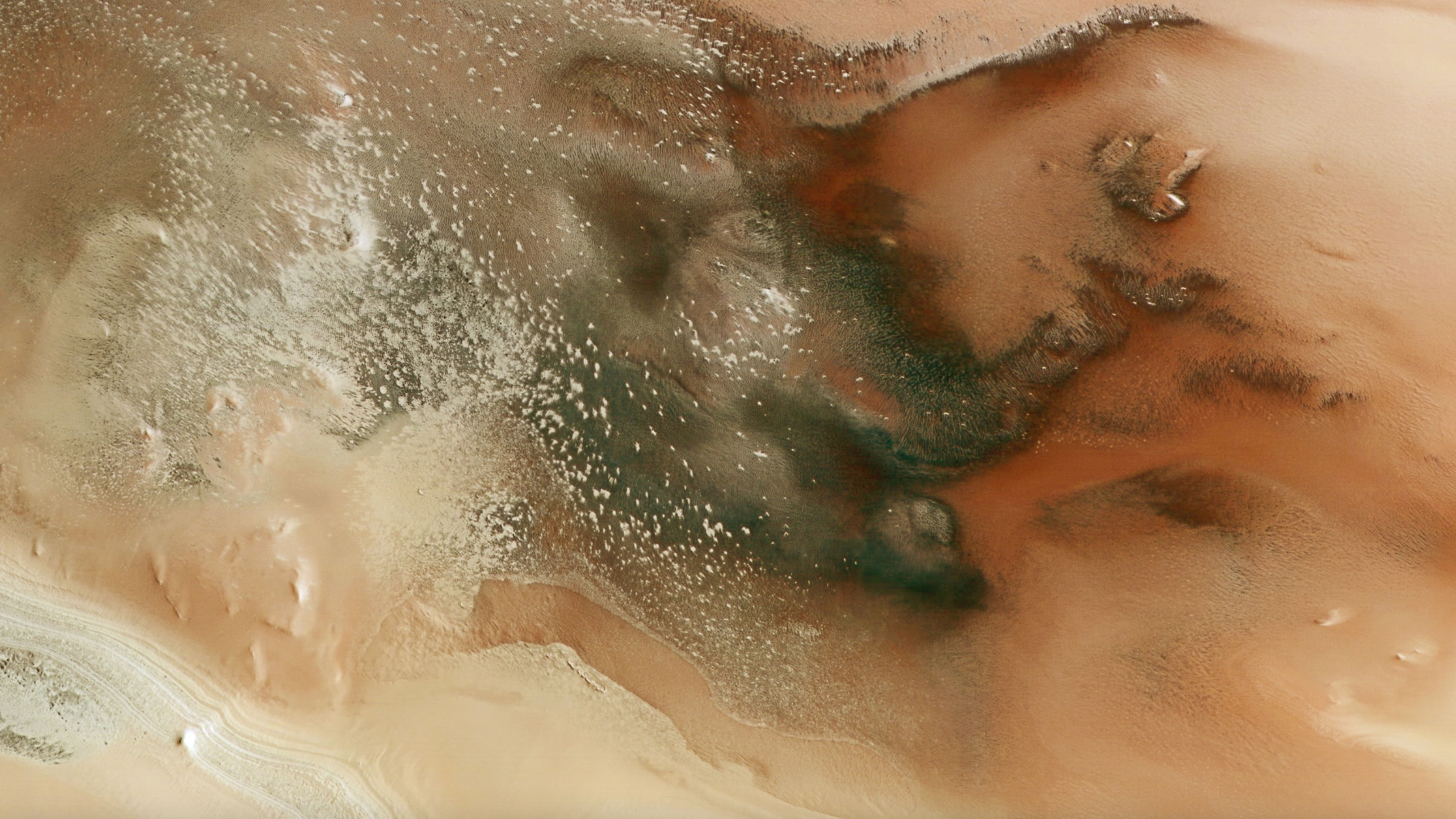
© ESA/DLR/FU Berlin

© Robert Lea (created with Canva)/ K. Franson., et al/ the Astrophysical Journal Letters
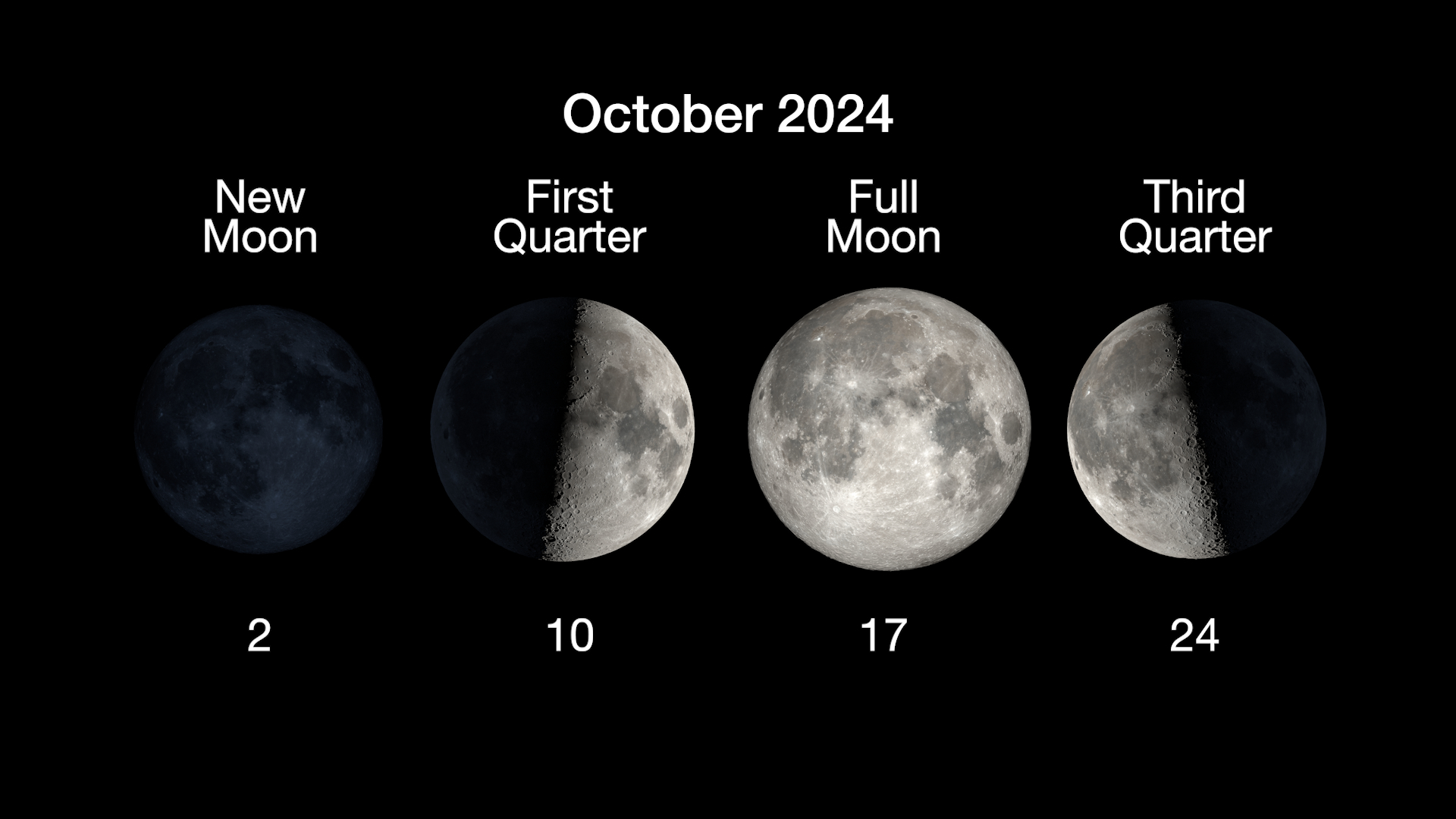
© NASA/JPL-Caltech

© NASA

© SpaceX/NASA/JPL

© Sergio Flores/AFP via Getty Images

© Dark Horse Comics

© NASA

© SpaceX

© NASA/Matthew Dominick

© NASA Kennedy Space Center

© TWiT
The third brightest object in the sky after the Sun and Moon, Venus is known for its opalescent splendor at dawn or dusk. Humans have long been drawn to its exquisite beauty and tied it to goddesses of love — from Inanna of Mesopotamian myth to the Greek Aphrodite and Roman Venus. But Venus isContinue reading "30 years ago: Magellan Venus mission successfully concluded"
The post 30 years ago: Magellan Venus mission successfully concluded appeared first on Astronomy Magazine.


© SpaceX

© SpaceX

© NASA/Don Pettit
Author(s): Rachel Berkowitz
A rare configuration of seven galaxies aligned behind a galaxy cluster allows researchers to probe with high precision the dark matter distribution within the cluster.
[Physics 17, 148] Published Fri Oct 11, 2024
Author(s): Philip Ball
The algorithm called AlphaFold has now been used to predict structures for all known proteins.
[Physics 17, 149] Published Fri Oct 11, 2024
Solar cycle 25 continues to deliver, with flares and coronal mass ejections delivering repeated auroral storms visible at latitudes much lower than normal. Last night’s geomagnetic storm reached G4 levels — the strongest since the historic G5 storm of May 10/11. This collection of photos includes the best of reader submissions, social media, and our ownContinue reading "The best images of the Oct. 10 auroral storm"
The post The best images of the Oct. 10 auroral storm appeared first on Astronomy Magazine.


© JADES Collaboration

© Robert Lea (created with Canva)/Rayssa Martins/Ross Findlay
NASA’s newest scientific flagship is on its way to the Jupiter system to explore the icy moon Europa, one of the most compelling worlds in our solar system. The mission lifted off Oct. 14 from Launch Complex 39A at NASA’s Kennedy Space Center in Florida at 12:06 p.m. EDT aboard a SpaceX Falcon Heavy rocket.Continue reading "NASA’s Europa Clipper sets sail for Jupiter"
The post NASA’s Europa Clipper sets sail for Jupiter appeared first on Astronomy Magazine.


© NASA/JPL-Caltech

© Robert Lea (created with Canva)

© Boeing Space
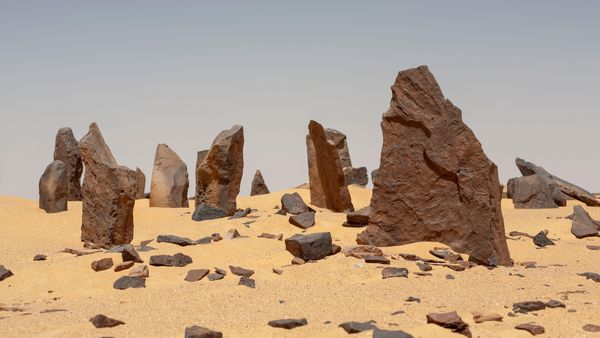
© Mike P Shepherd / Alamy Stock Photo

© ESA – A. Romeo
In the pioneering days of long-exposure astrophotography in the late 19th century, the use of dry plates over wet collodion plates simplified the photographic process. The increased light sensitivity of the emulsion coatings on dry plates allowed for shorter exposure times and produced sharper images of the night sky. In 1881, the French inventors brothersContinue reading "How we found Morehouse’s Black Ring: A dark nebula hiding in plain sight"
The post How we found Morehouse’s Black Ring: A dark nebula hiding in plain sight appeared first on Astronomy Magazine.

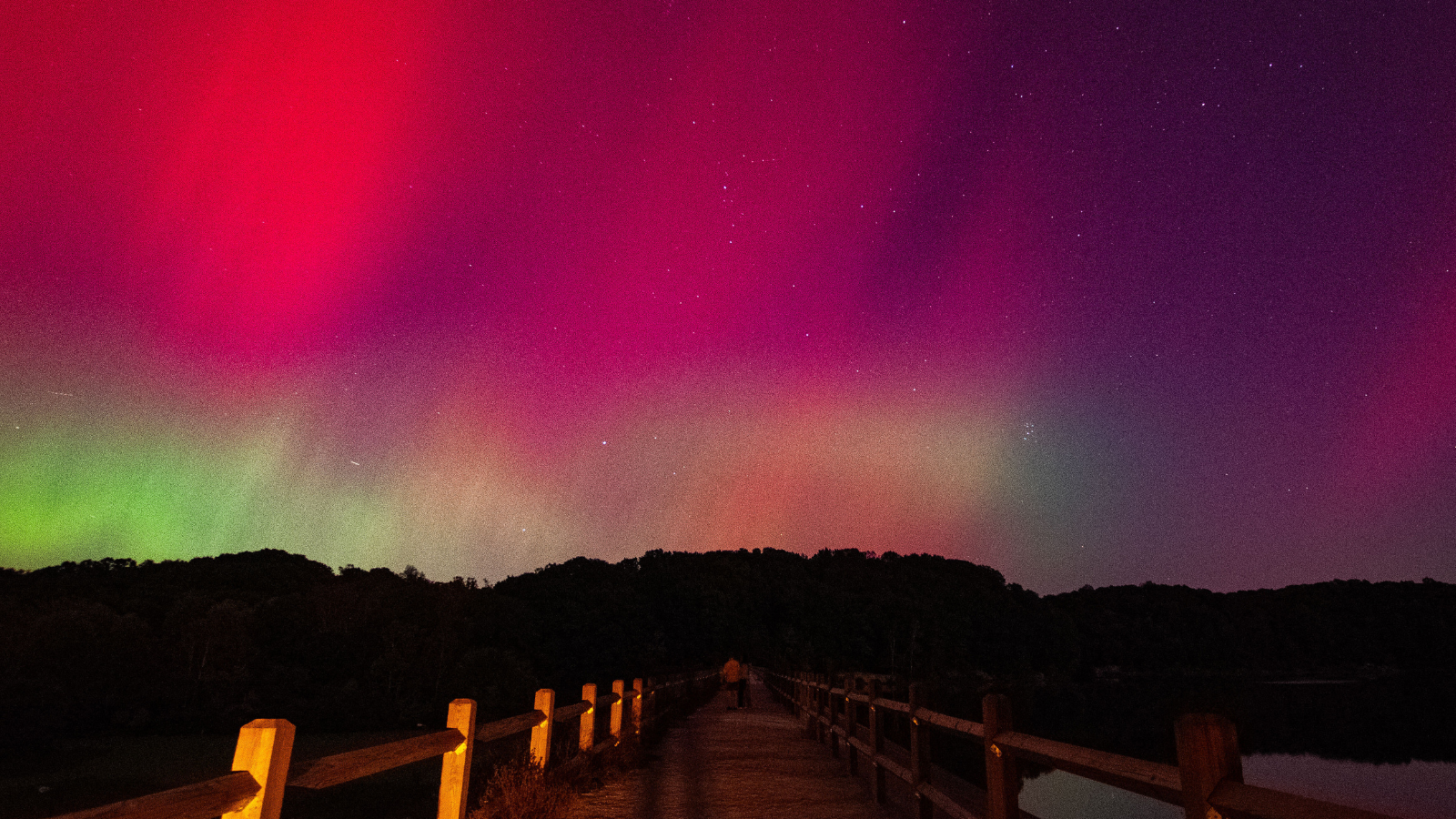
© Future/ Josh Diner

© NASA, ESA, STScI, Samantha Hasler (MIT), Amy Simon (NASA-GSFC), New Horizons Planetary Science Theme Team

© CERN
Friday, October 11Jupiter, now located in Taurus the Bull, appears in telescopes wreathed by its four largest moons: Io, Europa, Ganymede, and Callisto. At times, those moons pass in front of or behind the planet from our point of view, and tonight you can catch the latter as Europa pops into view after crossing behindContinue reading "The Sky This Week from October 11 to 18: 2024’s third Super Moon rises"
The post The Sky This Week from October 11 to 18: 2024’s third Super Moon rises appeared first on Astronomy Magazine.

In this video, Astronomy magazine editor Dave Eicher invites you to observe a comet that’s becoming visible in the evening sky. Starting around October 14, look just to the south of west between 15 and 30 minutes after sunset. The comet will be low, but with each evening that passes, it will be a littleContinue reading "See a comet in the evening: This Week in Astronomy with Dave Eicher"
The post See a comet in the evening: This Week in Astronomy with Dave Eicher appeared first on Astronomy Magazine.


© Danielle Futselaar, James Webb Space Telescope/NIRCam - NASA, ESA, CSA and STScI.
After putting on a show in the predawn sky earlier this month, Comet Tsuchinshan-ATLAS (C/2023 A3) was eventually lost in the glare of the Sun. But now that it has crossed behind the Sun from our point of view, it is emerging in the early evening sky and becoming more visible every night as itContinue reading "Comet Tsuchinshan-ATLAS is rising higher in the evening sky. Here’s where to look"
The post Comet Tsuchinshan-ATLAS is rising higher in the evening sky. Here’s where to look appeared first on Astronomy Magazine.


© NASA/ESA/Amy Simon (NASA-GSFC)

© Shutterstock

© NASA/SDO

© NASA

© Sen
On Oct. 8, an X-class solar flare gave rise to a coronal mass ejection (CME) that erupted from the surface of the Sun, racing toward Earth at 1.5 million mph (2.4 million km/h). It arrived at Earth at 11:15 a.m. EDT today, Oct. 10. At 12:57 p.m. EDT, the U.S. Space Weather Prediction Center (SWPC)Continue reading "Earth sees strong aurorae Oct. 10 as solar storm hits ‘severe’ G4 level"
The post Earth sees strong aurorae Oct. 10 as solar storm hits ‘severe’ G4 level appeared first on Astronomy Magazine.


© CCTV

© Future/Amazon

© Chris Vaughan/Starry Night
Author(s): Susan Curtis
The mitigation of a previously neglected energy-loss mechanism in organic light-emitting diodes has enabled researchers to enhance both efficiency and lifetime of these devices.
[Physics 17, s115] Published Thu Oct 10, 2024

© Shutterstock

© NASA/JHUPL/Carnegie Institution of Washington/SwRI

© NASA/NOAA

© NASA/SDO

© ESA/NASA/SOHO
NASA plans to send humans on a scientific round trip to Mars potentially as early as 2035. The trip will take about six to seven months each way and will cover up to 250 million miles (402 million kilometers) each way. The astronauts may spend as many as 500 days on the planet’s surface beforeContinue reading "NASA wants to send humans to Mars in the 2030s − a crewed mission could unlock some of the Red Planet’s geologic mysteries"
The post NASA wants to send humans to Mars in the 2030s − a crewed mission could unlock some of the Red Planet’s geologic mysteries appeared first on Astronomy Magazine.


© titan

© NASA/Goddard/University of Arizona

© NASA

© Future/Amazon

© Future/Amazon

© NASA/ESA/CSA/Leah Hustak (STScI)

© NASA

© collectSPACE.com

© LEGO

© Apple

© Warner Bros.
Author(s): Charles Day
Despite its intensity, the gravitational collapse of certain massive stars does not produce an abundance of heavy elements.
[Physics 17, s122] Published Wed Oct 09, 2024

© Future/Amazon

© dima_zel via Getty Images

© Pococo/Orzors/BlissLights

© Apple, Future

© Canon, Future

© cokada/iStock/Getty Images Plus

© NASA
Acquired by Mark McComsikey at Observatorio El Sauce, Chile; processed by Ron Brecher The Cosmic Bat Nebula is the 43rd object in Beverly Lynds’ landmark catalog of dark nebulae, which she published in 1962 — the greatest catalog of such objects since E.E. Barnard’s in 1919. Lynds died Oct. 5 at the age of 95.Continue reading "The hero we deserve"
The post The hero we deserve appeared first on Astronomy Magazine.


© Future/Hasbro

© ALMA (ESO/NAOJ/NRAO)/L. Rowland et al./ESO/J. Dunlop et al. Ack.: CASU, CALET

© NASA/JPL-Caltech

© NASA/Matthew Dominick

© Universal Pictures
In this episode, Dave Eicher invites you to observe a close meeting of the Moon and the brightest star in the constellation Scorpius the Scorpion, Antares. This celestial meet-up will take place on the evening of October 7. You won’t need binoculars or a telescope to view it, although binoculars may give a more pleasingContinue reading "The Moon meets Antares: This Week in Astronomy with Dave Eicher"
The post The Moon meets Antares: This Week in Astronomy with Dave Eicher appeared first on Astronomy Magazine.


© SpaceX
Although the day started out with a few clouds and rain, the European Space Agency’s (ESA) Hera mission successfully launched on Monday at 10:52 a.m. EDT from NASA’s Kennedy Space Center in Florida. Although advance forecasts gave only a 15 percent chance of favorable weather, fears of postponement quickly dissipated as each stage of theContinue reading "ESA’s Hera mission is headed to Dimorphos, the asteroid NASA crashed into"
The post ESA’s Hera mission is headed to Dimorphos, the asteroid NASA crashed into appeared first on Astronomy Magazine.


© NASA/SDO and the AIA, EVE, and HMI science teams, helioviewer.org

© Michael Mattiazzo

© RAND/Aerospace Corporation
Many large survey experiments in astronomy are looking to understand what we still don’t know about dark energy. Yet, many are plagued with the same problem: too much data. A tricky problem The Hobby-Eberly Telescope Dark Energy Experiment (HETDEX) is looking to create one of the largest maps of the universe by creating aContinue reading "Dark Energy Explorers: How you can help unravel one of the universe’s biggest mysteries"
The post Dark Energy Explorers: How you can help unravel one of the universe’s biggest mysteries appeared first on Astronomy Magazine.


© Future/Amazon

© 20th Century Studios
The 2024 Nobel Prize in Physics honors pioneering work on artificial neural networks, which provided the foundation for many of the artificial intelligence technologies in use today.
[Physics 17, 146] Published Tue Oct 08, 2024

© Sony

© DJI, Future
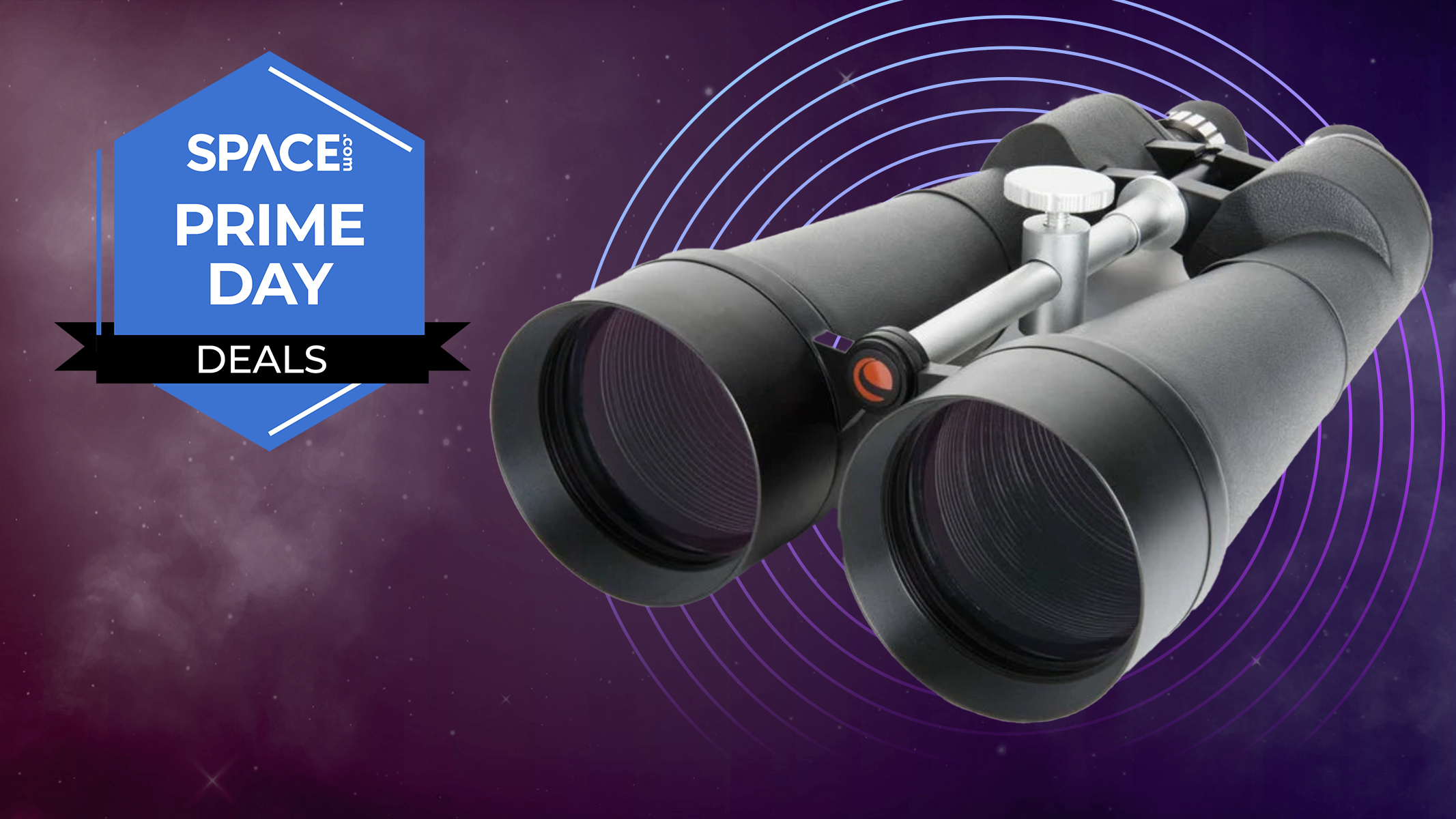
© Future/Celestron

© Future/Amazon

© Celestron
Author(s): Charles Day
When two laser beams converge on a volume of gas, their interference creates a diffraction grating made of plasma that can divert and shape a third beam.
[Physics 17, s123] Published Tue Oct 08, 2024

© SpaceX
Affordable fast Newtonian astrographs are game changers for astrophotographers. Most of these instruments have a focal ratio in the vicinity of f/4, allowing them to capture light from deep-sky objects more than six times faster than the f/10 Schmidt-Cassegrain telescopes that dominate the market. But with that faster speed comes a huge problem: a curvedContinue reading "Why Starizona’s Nexus coma corrector wows"
The post Why Starizona’s Nexus coma corrector wows appeared first on Astronomy Magazine.

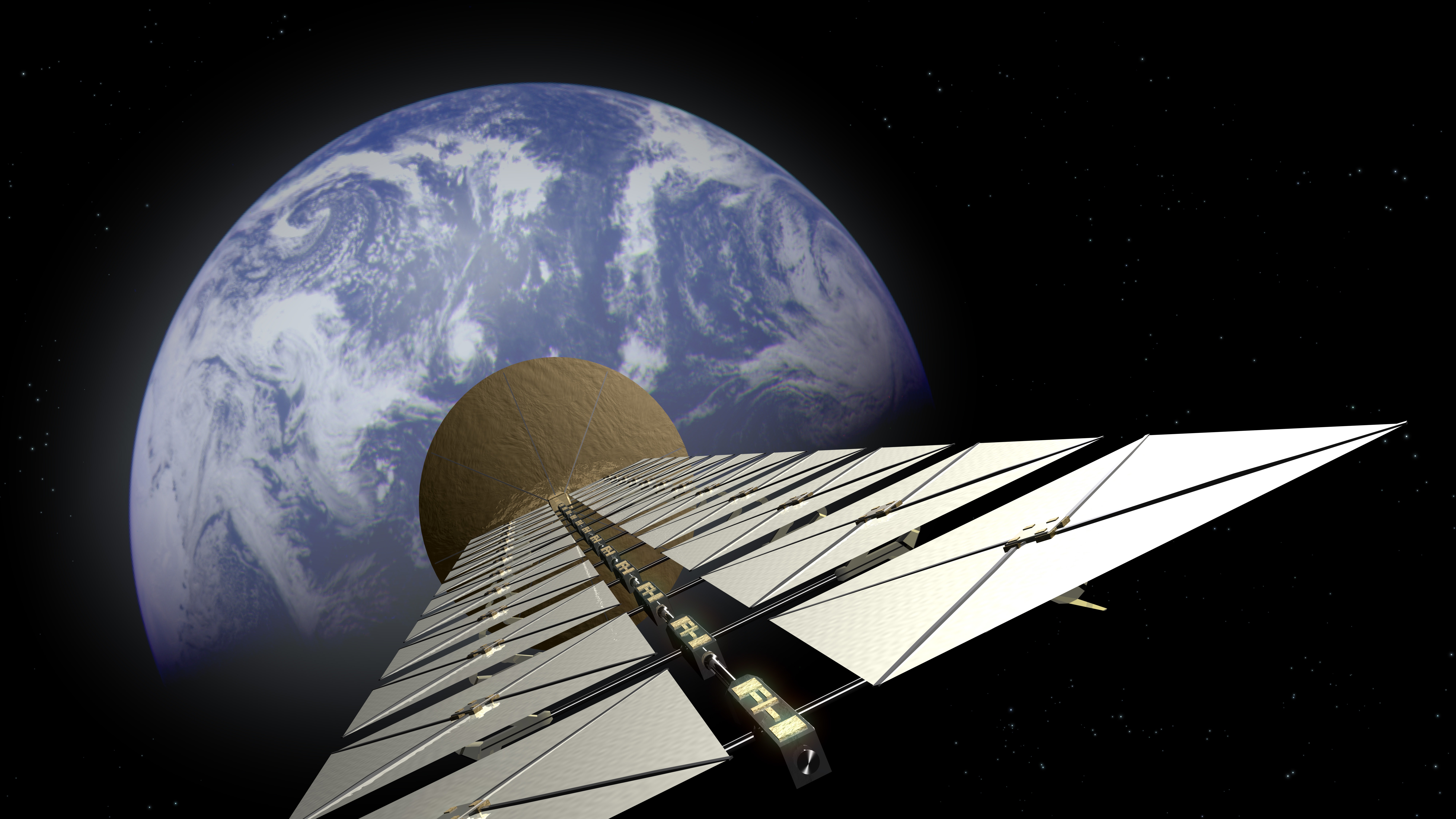
© ESA

© Amazon

© NASA TV
UPDATE Oct. 10: The Kennedy Space Center remains closed as NASA begins “the assessment and recovery process” from Hurricane Milton, the agency said in a statement today. The statement continued: “The agency’s Europa Clipper launch team will schedule an official launch date when teams from NASA and SpaceX are able to perform their assessments, andContinue reading "Europa Clipper launch postponed until at least Oct. 13 due to Hurricane Milton"
The post Europa Clipper launch postponed until at least Oct. 13 due to Hurricane Milton appeared first on Astronomy Magazine.


© CSU/CIRA & NOAA

© Future/Paramount Plus

© SYFY

© BBC
Comet Tsuchinshan-ATLAS, also known by its catalog designation C/2023 A3, is now magnitude 2.2 in the morning sky. But if you’re not an early riser, you can soon rejoice — it will become visible in the evening sky starting Oct. 14. On that date, the comet will be in the far eastern part of theContinue reading "Comet Tsuchinshan-ATLAS will soon move into the evening sky"
The post Comet Tsuchinshan-ATLAS will soon move into the evening sky appeared first on Astronomy Magazine.

Behyar Bakhshandeh from Carlsbad, California The Moon and Venus met in the sky this past weekend, as captured here on Oct. 5 with a Canon DSLR and 300mm f/4 lens.
The post An autumn conjunction appeared first on Astronomy Magazine.

The holiday season is the best time to deepen your love of the cosmos — or give someone you know a great space-themed gift. But finding the perfect astronomy present is hard. That’s why The Space Store, the online store of Astronomy magazine, curated this list of top-rated astronomy and space-themed gifts for the 2024 Christmas andContinue reading "The Best Space Gifts for Astronomy Lovers and Stargazers | Holiday Gift Guide 2024"
The post The Best Space Gifts for Astronomy Lovers and Stargazers | Holiday Gift Guide 2024 appeared first on Astronomy Magazine.


© NASA/Goddard Space Flight Center Conceptual Image Lab

© ESA/SpaceX

© Robert Lea (created with Canva)/NASA
Author(s): Matteo Ciarchi and Ivan Di Terlizzi
Bacteria, cells, swarms, and other organisms pluck information from noisy environments with extraordinarily high precision.
[Physics 17, 143] Published Mon Oct 07, 2024
Author(s): Mark Buchanan
An infrared detector is sensitive to a wide range of intensities and could potentially pick up biomarkers from exoplanet atmospheres.
[Physics 17, 144] Published Mon Oct 07, 2024
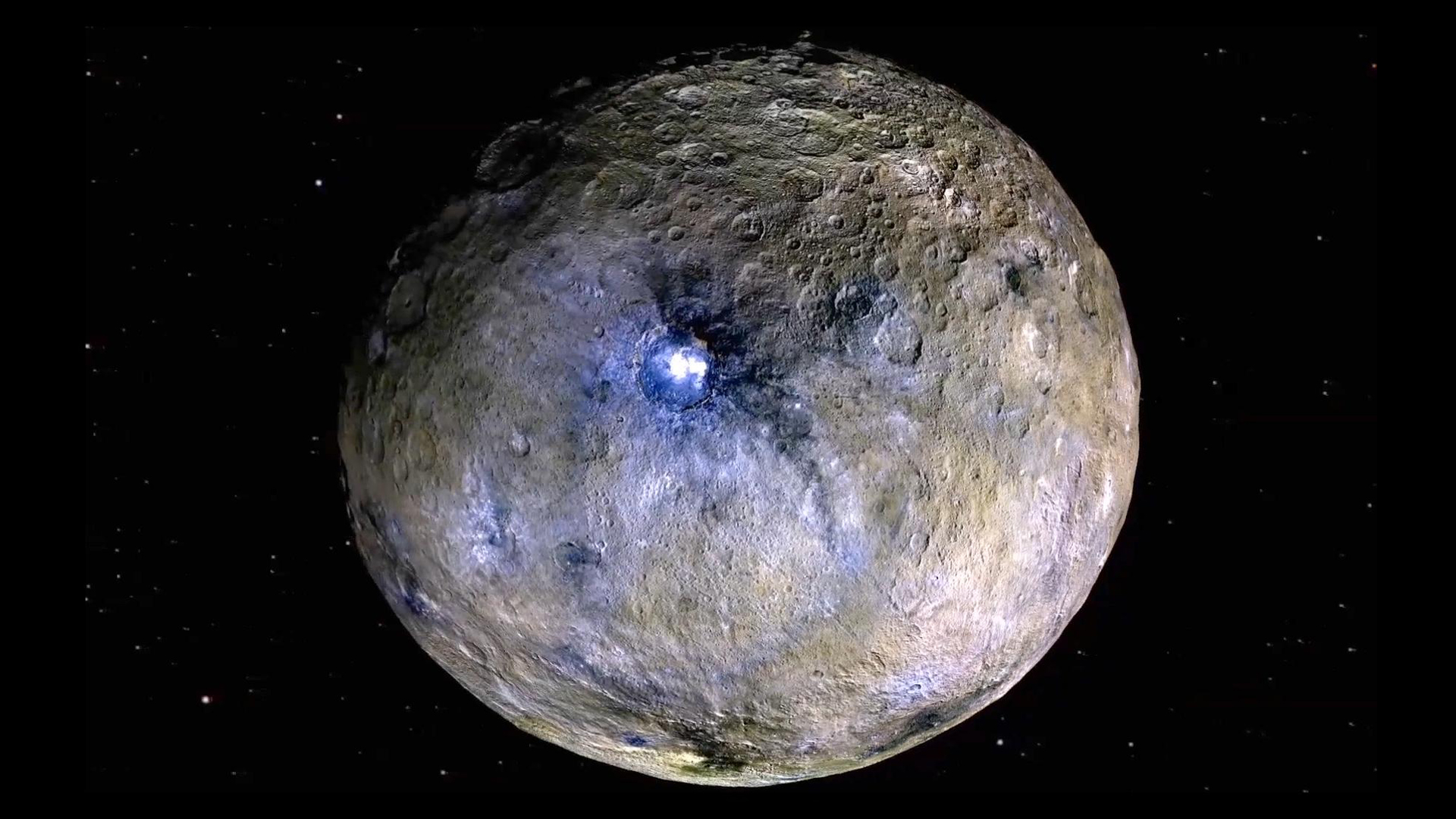
© NASA
Do astronomers have any estimates of when Saturn’s rings will disappear? Doug KaupaCouncil Bluffs, Iowa All four of the solar system’s giant planets have ring systems. The rings of Jupiter, Uranus, and Neptune are dark, sparse belts or ringlets. Only Saturn’s massive main rings are dense and bright, made of almost pure water-ice particles rangingContinue reading "How long will Saturn’s rings last before they disappear? "
The post How long will Saturn’s rings last before they disappear? appeared first on Astronomy Magazine.

American astronomer Beverly Turner Lynds died peacefully Oct. 5, 2024 at a hospice in Portland, Oregon, after suffering a stroke in early September. She was 95 years old. Lynds was born Aug. 19, 1929, in Shreveport, Louisiana, but moved to New Orleans at age three. She attended Centenary College in Shreveport and decided she wanted toContinue reading "Beverly Lynds, creator of landmark catalog of dark nebulae, dies at 95"
The post Beverly Lynds, creator of landmark catalog of dark nebulae, dies at 95 appeared first on Astronomy Magazine.


© BlissLights

© NASA+

© Celestron

© National Astronomical Observatory of Japan (NAOJ)

© SpaceX

© Jamie Carter

© Future

© NASA

© TWiT
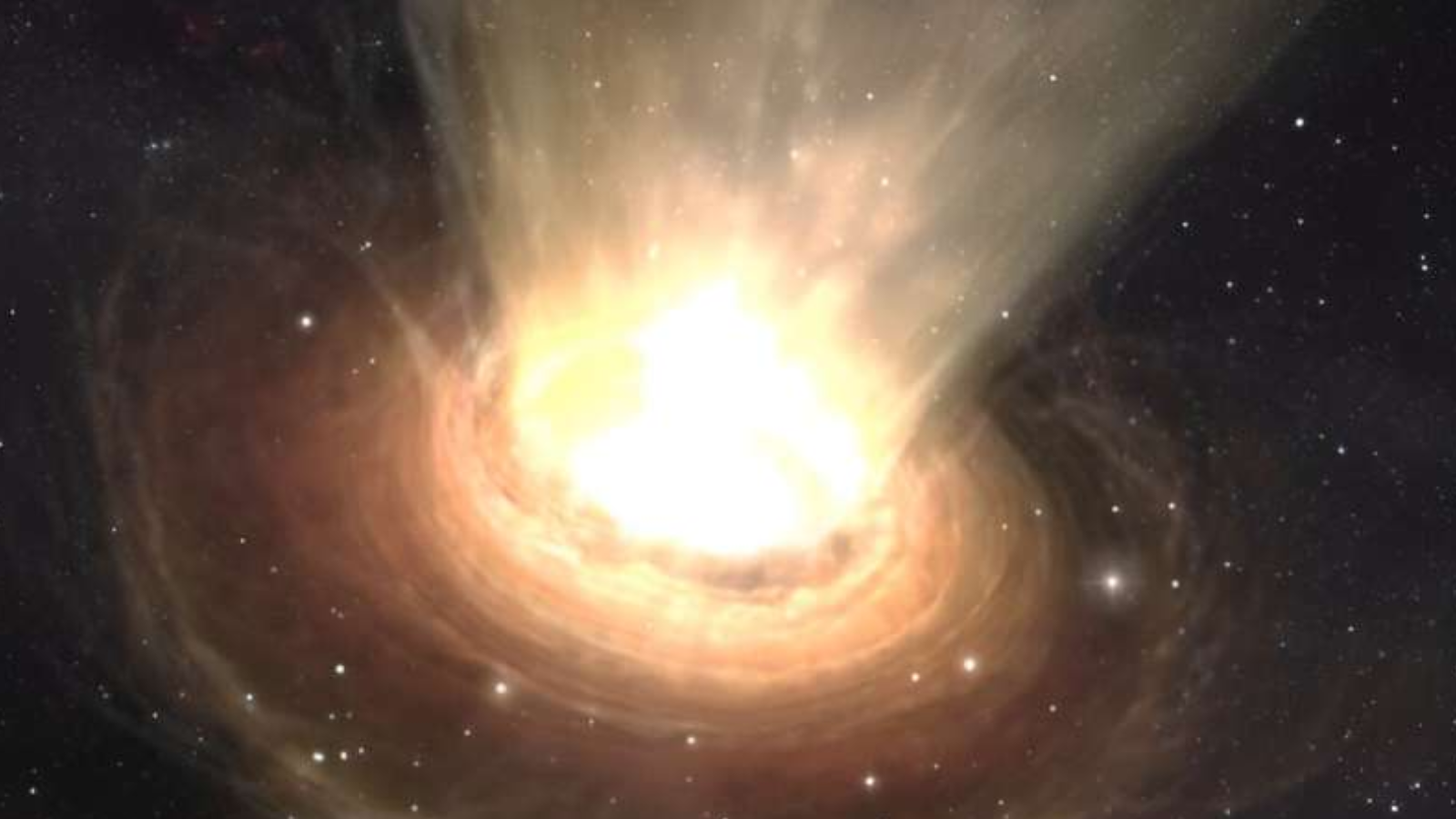
© ESO/M. Kornmesser
NASA plans to send crewed missions to Mars over the next decade – but the 140 million-mile (225 million-kilometer) journey to the red planet could take several months to years round trip. This relatively long transit time is a result of the use of traditional chemical rocket fuel. An alternative technology to the chemically propelledContinue reading "Nuclear rockets could travel to Mars in half the time − but designing the reactors that would power them isn’t easy"
The post Nuclear rockets could travel to Mars in half the time − but designing the reactors that would power them isn’t easy appeared first on Astronomy Magazine.


© Chris Vaughan/Starry Night
UPDATE Oct. 7: The Hera mission lifted off today, Monday, Oct. 7 at 10:52 a.m. EDT. The launch livestream can be viewed below via the European Space Agency’s YouTube stream or on X via SpaceX’s account. Here’s what to know about the Hera mission. In 2022, NASA’s Double Asteroid Redirection Test (DART) successfully slammed intoContinue reading "Hera launches to survey the wreckage of NASA’s asteroid impact test"
The post Hera launches to survey the wreckage of NASA’s asteroid impact test appeared first on Astronomy Magazine.


© NASA Earth Observatory

© Blue Origin
Jean Cursino, taken from Caçapava, São Paulo, Brazil The long tail of Comet Tsuchinshan-ATLAS (C/2023 A3) appears in this 30-second exposure taken at f/2.2 and ISO 250 with a Nikon DSLR and 50mm lens.
The post Pastoral perihelion appeared first on Astronomy Magazine.


© NASA’s Goddard Space Flight Center

© Amazon/Future

© NASA
On Sept. 1, 1859, the most intense geomagnetic storm in recorded history paid Earth a visit. This colossal solar outburst, which led to telegraph systems catching fire and aurorae lighting up skies down to the tropics, became known as the Carrington Event, in honor of English amateur astronomer Richard Carrington, who determined that a majorContinue reading "Is AI the key to predicting solar storms?"
The post Is AI the key to predicting solar storms? appeared first on Astronomy Magazine.

Author(s): Michael Schirber
A short-lived combination of an electron and an antielectron has been cooled with lasers to near absolute zero—a step toward tackling fundamental questions about matter and antimatter.
[Physics 17, 145] Published Fri Oct 04, 2024

© CCTV
Solar flares, powerful bursts of energy from our Sun, can have serious effects here on Earth. Flares and other solar eruptions can affect radio communications, disrupt electric power grids, mess up navigation signals like GPS, and pose risks to spacecraft and any astronauts in them. These effects happen because the ionosphere (Earth’s upper atmosphere, fromContinue reading "Will a new solar flare produce great northern lights?"
The post Will a new solar flare produce great northern lights? appeared first on Astronomy Magazine.


© NASA/JPL-Caltech

© SpaceX
The constellation Sculptor is not an easy star pattern to find, but it’s worth the effort because it contains some gorgeous deep-sky objects. Its name comes from French astronomer Nicolas Louis de Lacaille, who surveyed the southern sky from 1750 to 1753 at the Cape of Good Hope. He called the pattern “The Sculptor’s Workshop,”Continue reading "Observe the galaxies of Sculptor"
The post Observe the galaxies of Sculptor appeared first on Astronomy Magazine.


© United Launch Alliance (ULA)
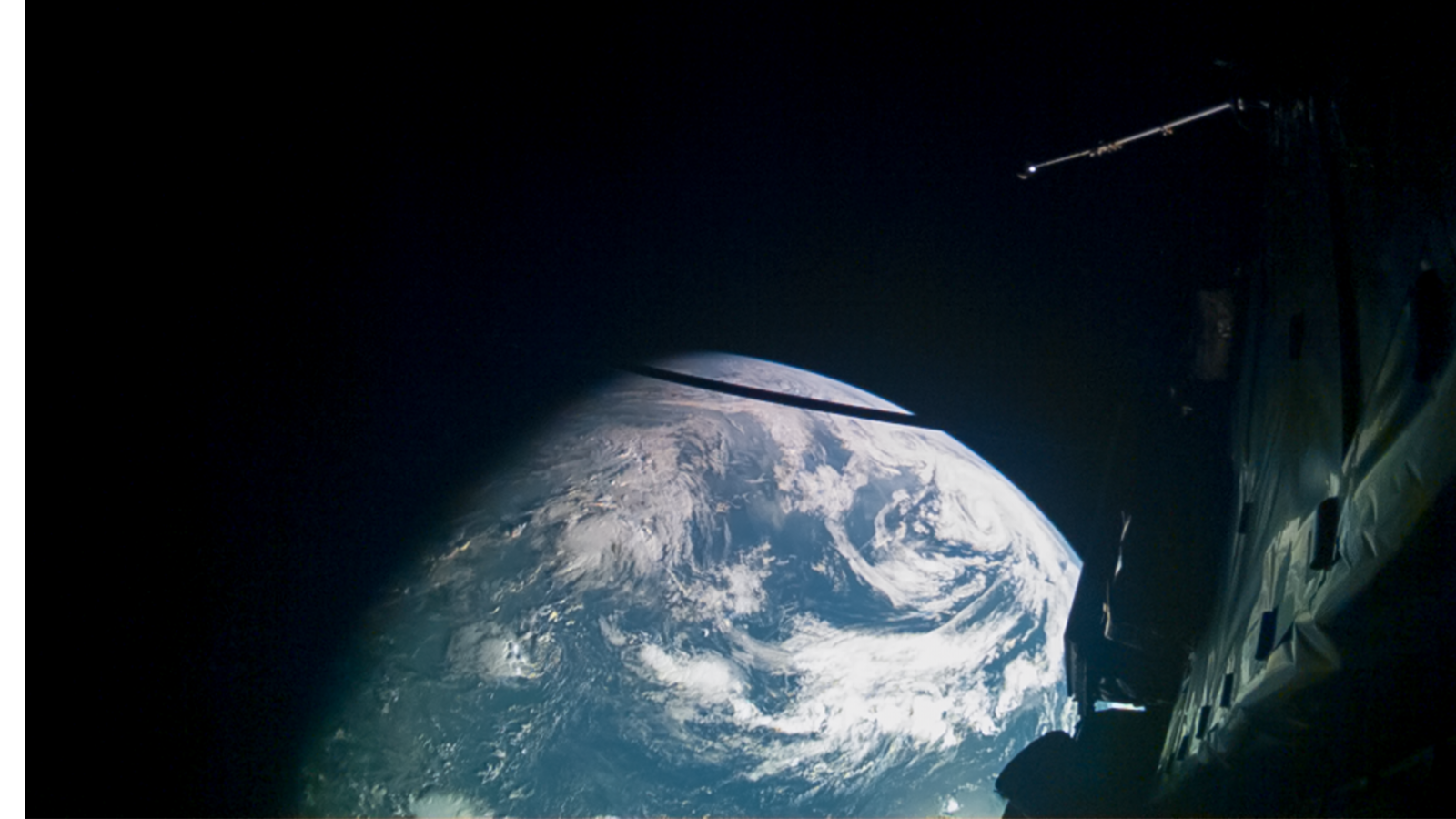
© ESA/Juice/JMC
Friday, October 4Now that autumn is officially upon the Northern Hemisphere, the familiar wintertime constellations are rising earlier each night. One of those constellations is Taurus, now some 30° above the eastern horizon by local midnight. The brightest star in Taurus is the Bull’s red giant eye, Aldebaran. (Don’t mistake brighter Jupiter, now in easternContinue reading "The Sky This Week from October 4 to 11: Enjoy a First Quarter Moon"
The post The Sky This Week from October 4 to 11: Enjoy a First Quarter Moon appeared first on Astronomy Magazine.


© NASA, ESA, CSA, STScI, B. Frye (University of Arizona), R. Windhorst (Arizona State University), S. Cohen (Arizona State University), J. D’Silva (University of Western Australia, Perth), A. Koekemoer (Space Telescope Science Institute), J. Summers (Arizona State University).
As lone stars go, there’s nothing quite so distinctive as Barnard’s Star. After the Alpha Centauri system, it is our closest neighbor, a red dwarf one-fifth the size of the Sun and 4,500 degrees Fahrenheit (2,500 degrees Celsius) cooler. Just 6 light-years away, it outpaces all other stars by shifting across the night sky byContinue reading "Discovery of a tiny exoplanet sheds new light on a very old star"
The post Discovery of a tiny exoplanet sheds new light on a very old star appeared first on Astronomy Magazine.


© NASA/Noah Moran

© ULA

© NASA/JPL-Caltech/MSSS

© Getty Images

© Robert Lea (created with Canva)/NASA

© NASA / SDO and the AIA, EVE, and HMI science teams / helioviewer.org

© Josh Dury
Author(s): Ryan Wilkinson
By observing the motion of preschool children, researchers have developed a thermodynamic description of human movement that pinpoints collective phases emerging when social interactions are strong.
[Physics 17, s111] Published Thu Oct 03, 2024

© Purdue University/collectSPACE.com

© NASA

© Mathieu Lewis-Rolland/Getty Images

© Future/Amazon

© NASA/JPL-Caltech
Your editor is in the midst of a weeklong trip to a very remote place. A few days ago I departed Tucson and traveled to Santiago, Chile, where I met about 20 enthusiastic people who were charged up to see the annular eclipse that occurred today. We spent two days touring the marvels of Santiago,Continue reading "Eclipse success on Easter Island"
The post Eclipse success on Easter Island appeared first on Astronomy Magazine.


© Juan Mabromata / AFPGetty Images

© ULA

© NASA/SDO and the AIA, EVE, and HMI science teams, helioviewer.org
Author(s): Michael Schirber
New experimental results from the Large Hadron Collider argue against the existence of multiple Higgs bosons, as predicted in certain “beyond-standard-model” theories.
[Physics 17, s119] Published Wed Oct 02, 2024
Wael Omar, taken from Giza, Egypt Comet Tsuchinshan-ATLAS (C/2023 A3) and a crescent Moon rise over the three main pyramids at Giza in this composite scene. Each layer consists of twenty-five 0.8-second subframes taken with a Sony astromodified mirrorless camera at ISO 800 and an 85mm lens at f/2.8.
The post Three wonders appeared first on Astronomy Magazine.


© NASA/JPL-Caltech

© Chris Vaughan/Starry Night

© Robert Lea (created with Canva)/NASA/JPL-Caltech/UCLA

© SpaceX